Biospectroscopy
News

New Body-Fluid Biomarker for Parkinson’s Disease Discovered
A misfolded protein facilitates reliable diagnosis even in the early stages of Parkinson’s disease in body fluids.
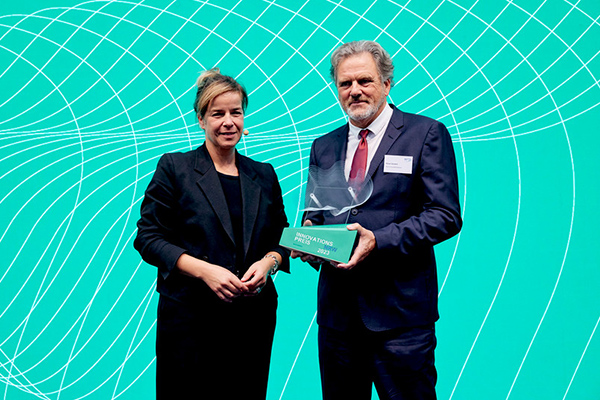
Klaus Gerwert receives the innovation award from the state of North Rhine-Westphalia
Detecting neurodegenerative diseases at an early stage – this is possible thanks to the biophysicist’s research. ...
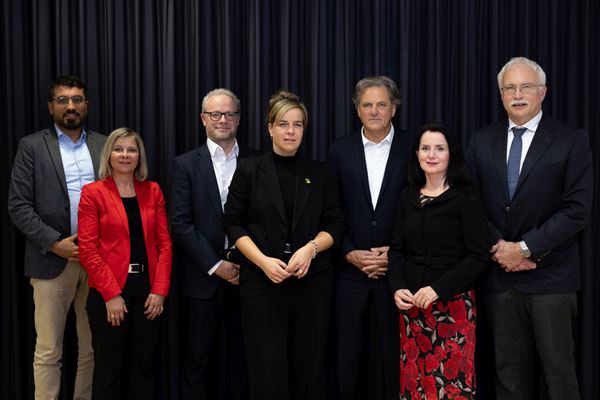
NRW Minister of Economic Affairs Mona Neubaur visits start-up betaSENSE
Detecting neurodegenerative diseases at an early stage - this is possible thanks to protein research in Bochum. ...
more (only in German)
Research focus
Neurodegenerative diseases
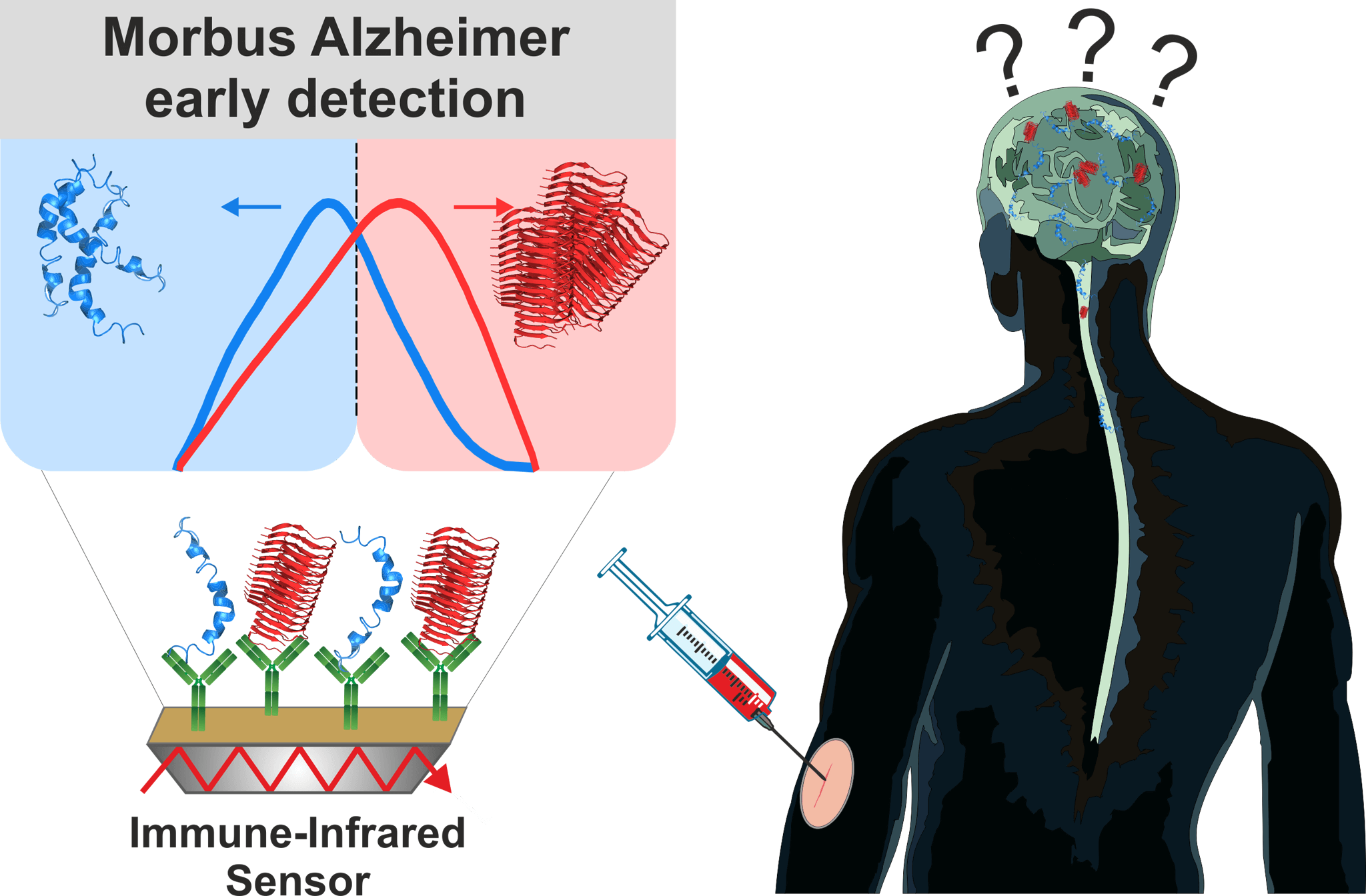
The loss of nerve cells in the human brain is a natural aging process. However, if it exceeds the usual level, it is called a neurodegenerative disease. Among the best known and most common neurodegenerative diseases are Alzheimer's disease and Parkinson's disease. One focus of the Biospectroscopy competence area is the development of innovative, minimally invasive spectroscopic methods for the early diagnosis of neurodegenerative diseases.
Oncological diseases
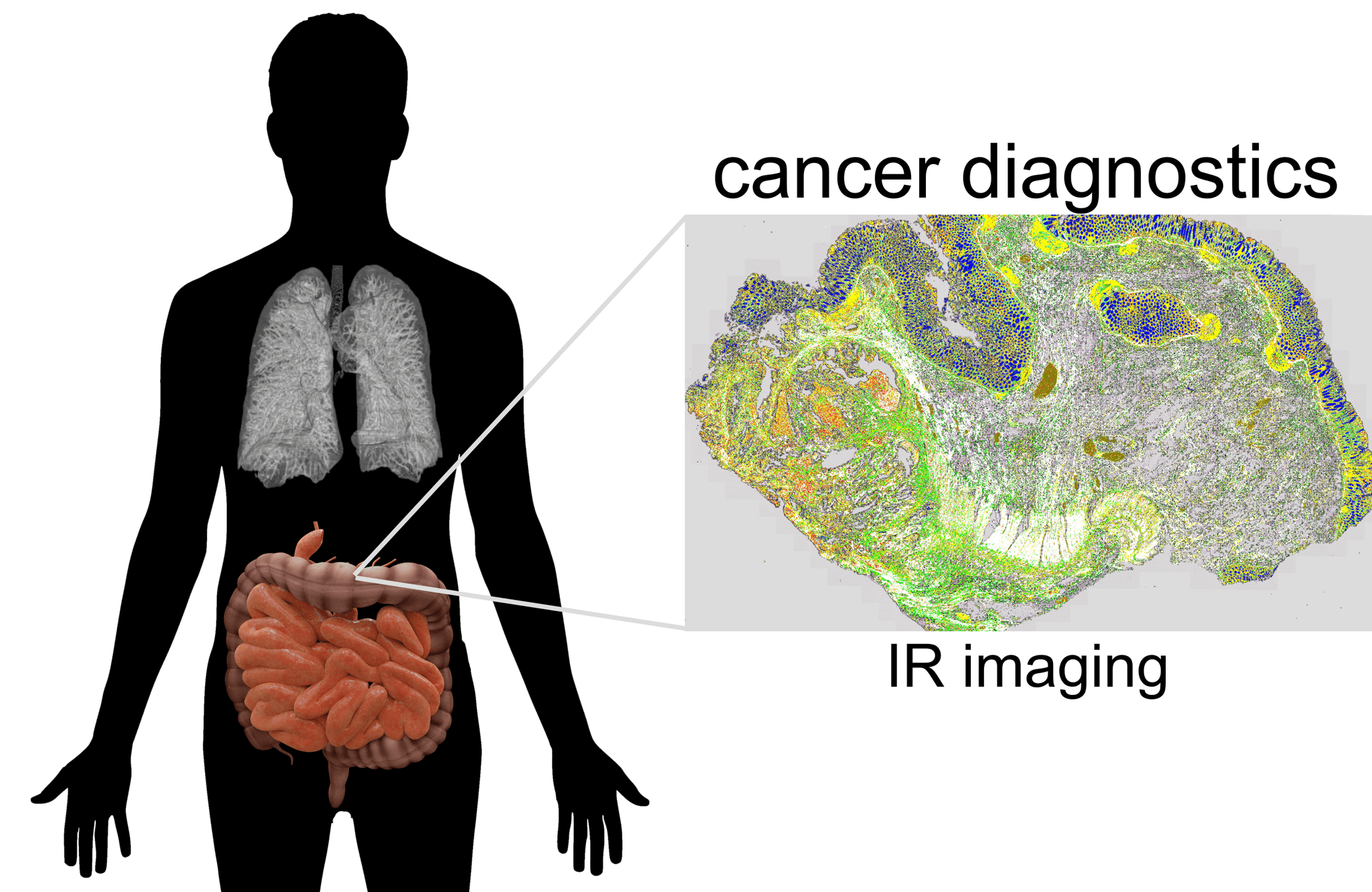
The growth and division of body cells is a natural and highly controlled process. However, damage to the genetic information can lead to uncontrolled proliferation of degenerate cells. If this happens, it is called cancer. The earlier and more precisely cancer is diagnosed, the higher the probability of a complete recovery. One focus of the Biospectroscopy competence area is the development of imaging spectroscopic methods for the precise, therapy-decisive and early diagnosis of oncological diseases.
Methodology development
Analysis of body fluids – ATR-IR spectroscopy
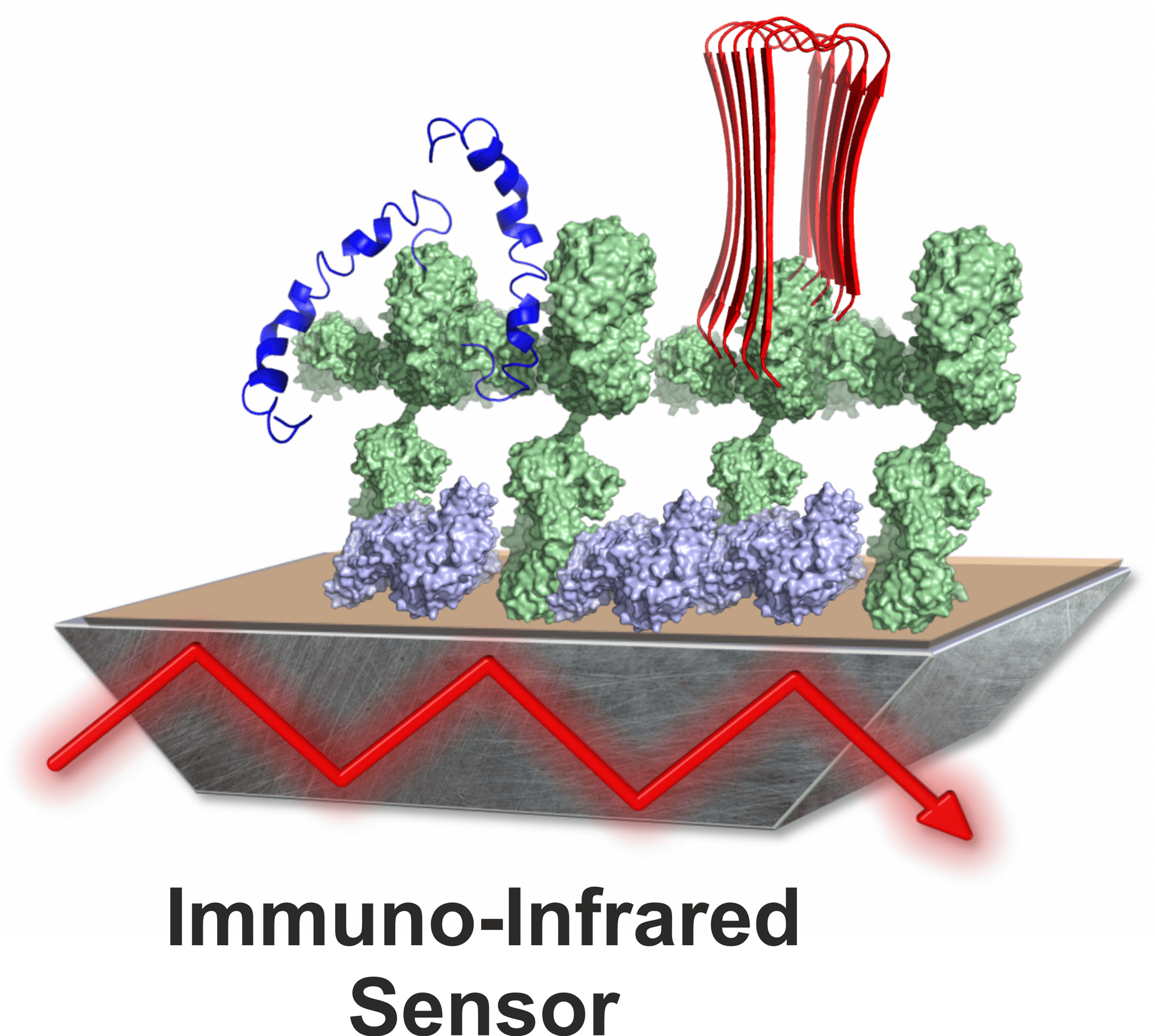
In the competence area biospectroscopy, spectroscopic methods are developed to use human body fluids for the diagnosis of neurodegenerative diseases. The focus is on improving diagnosis, in particular by analyzing blood plasma using our immuno-infrared sensor. In contrast to spinal fluid, blood plasma is obtained in a minimally invasive and cost-effective manner as part of routine diagnostics in both clinics and general practitioners' offices.
Imaging methods
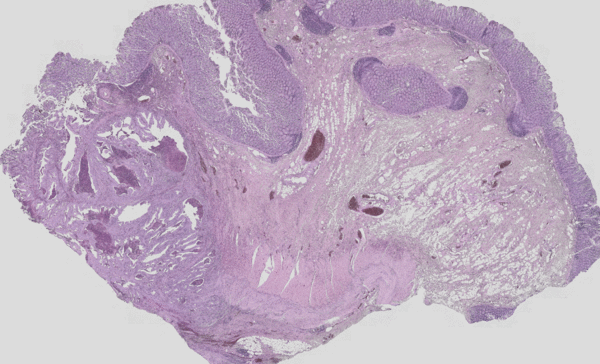
The clinical gold standard for fine tissue diagnostics is currently still based solely on the visual interpretation of a hematoxilin-eosin (H&E) or immunohistochemically stained tissue thin section by a pathologist. In the Biospectroscopy competence area, we have established an innovative label-free approach to assist pathologists in their diagnosis. We call this approach "label-free digital pathology".
FTIR Raman spectroscopy
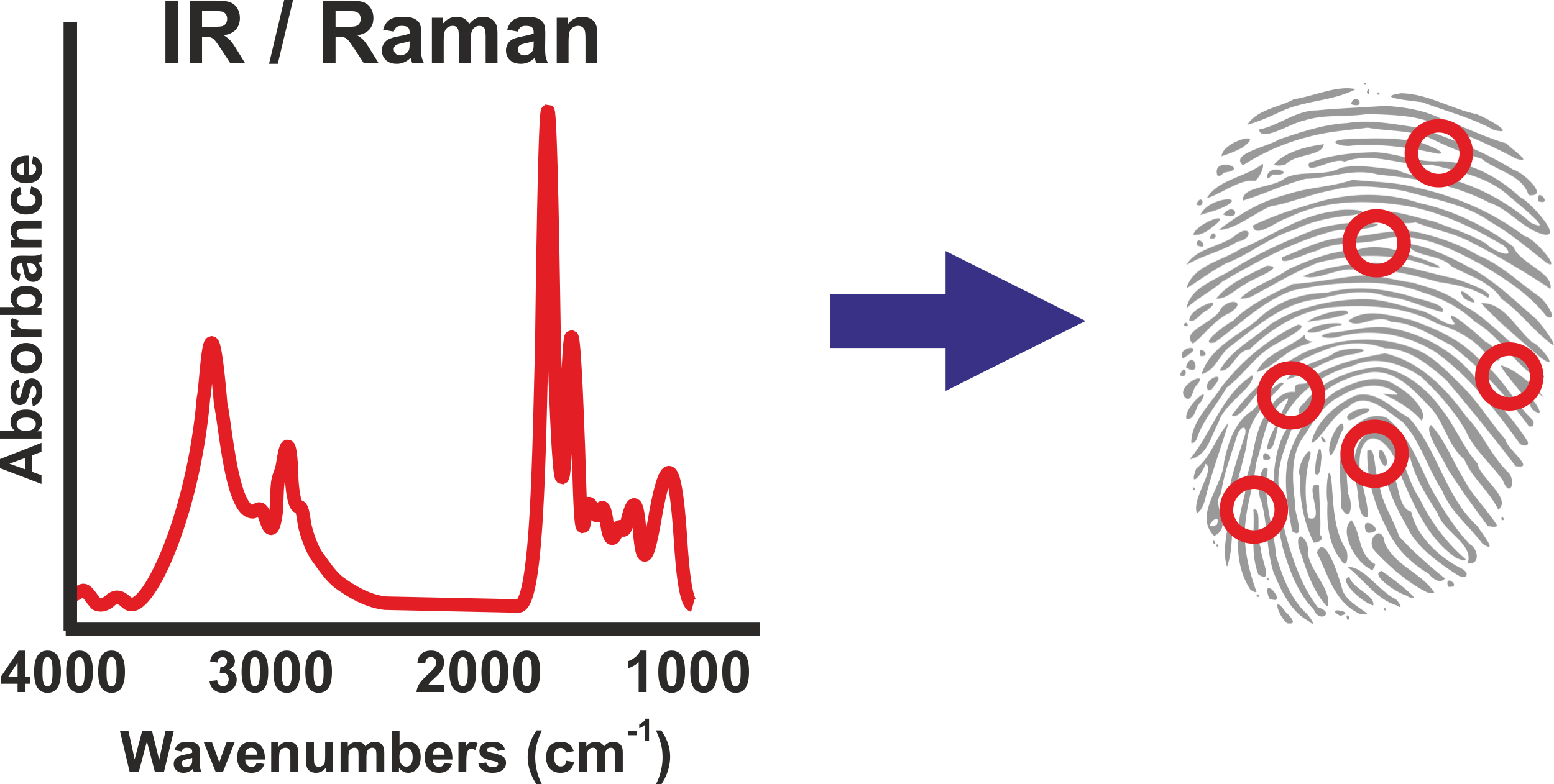
Each molecule has vibrations that are as characteristic as a fingerprint. Therefore, molecules can be identified by their characteristic infrared absorption or Raman emission alone. We exploit this spectral fingerprint in the competence area of biospectroscopy to develop new diagnostic methods for oncological and neurodegenerative diseases.
New technologies QCL
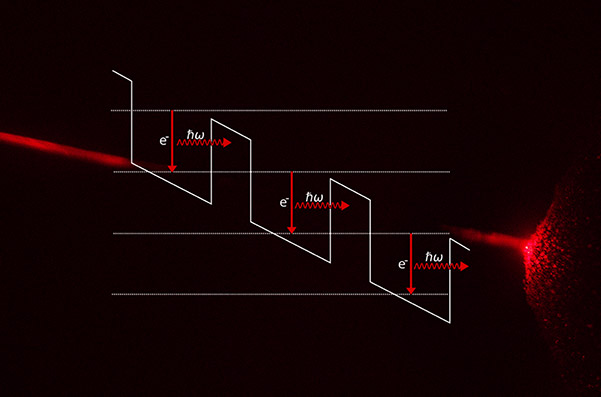
Recent developments in the field of quantum cascade lasers (QCL) provide a new, very intense and tunable radiation source for the mid-infrared, which will replace classical FTIR spectroscopy in many applications. Due to the considerably higher radiation intensity, the much more compact dimensions and the lower demands on laboratory equipment, completely new application possibilities arise, also directly in the clinical environment.
Press
| Datum / date | Titel | Link | Kompetenzbereich | Neuro | Krebs | Körperflüsigkeiten | Bildgebend | IR | QCL |
|---|---|---|---|---|---|---|---|---|---|
| 26.09.2023 | Klaus Gerwert erhält Innovationspreis des Landes NRW | Link | Biospektroskopie | Neuro | Körperflüssigkeiten | IR | |||
| 20.07.2023 | Bochum-Podcast - Der Oberbürgermeister trifft Klaus Gerwert | Link | Biospektroskopie | Neuro | Körperflüssigkeiten | IR | |||
| 14.02.2023 | KI mit Infrarot-Imaging ermöglicht präzise Darmkrebs-Diagnostik | Link | Biospektroskopie | Krebs | Bildgebend | IR | |||
| 17.01.2023 | Alzheimer-Frühdiagnostik - Spin-Off betaSENSE zieht ins BioMedizinZentrum | Link | Biospektroskopie | Neuro | Körperflüssigkeiten | IR | |||
| 21.07.2022 | Alzheimer-Früherkennung bis zu 17 Jahre im Voraus | Link | Biospektroskopie | Neuro | Körperflüssigkeiten | IR | |||
| 02.02.2022 | KI-gestütztes Infrarot-Imaging hilft bei der Diagnostik von Krebs | Link | Biospektroskopie | Krebs | Bildgebend | IR | |||
| 15.06.2021 | Neuronale Einschlüsse bei Parkinson-Krankheit sehen aus wie Zwiebeln | Link | Biospektroskopie | Neuro | Bildgebend | IR | |||
| 02.06.2021 | Krebsförderndes Ras-Protein liegt in Zellen im Doppelpack vor | Link | Biospektroskopie | Krebs | IR | ||||
| 20.05.2021 | Lichtaktivierbare Proteine verstehen, um sie zu verbessern | Link | Biospektroskopie | IR | |||||
| 06.01.2021 | Ein prognostischer Alzheimer-Blutest im symptomfreien Zustand | Link | Biospektroskopie | Neuro | Körperflüsigkeiten | IR | |||
| 18.12.2020 | Entwicklung von Alzheimer-Plaques mit Infrarot-Mikroskopie aufgeklärt | Link | Biospektroskopie | Neuro | Bildgebend | IR | |||
| 08.12.2020 | Neuer Biomarkerkandidat für Amyotrophe Lateralsklerose | Link | Biospektroskopie | Neuro | Körperflüsigkeiten | IR | |||
| 23.06.2020 | Künstliche Intelligenz klassifiziert Darmkrebs anhand von IR-Imaging | Link | Biospektroskopie | Krebs | Bildgebend | IR | |||
| 02.03.2020 | Ein neues Werkzeug für die An- und Abschaltung von Proteinen | Link | Biospektroskopie | IR | |||||
| 29.01.2020 | Bochumer Alzheimer-Bluttest wird weiterentwickelt | Link | Biospektroskopie | Neuro | Körperflüsigkeiten | IR | |||
| 14.10.2019 | Fehlerhafte Proteinfaltung als Alzheimer-Risikomarker | Link | Biospektroskopie | Neuro | Körperflüsigkeiten | IR | |||
| 02.08.2019 | Lichtaktivierbare Proteine gezielt herstellen | Link | Biospektroskopie | IR | |||||
| 28.07.2019 | Studie stellt Annahmen über Ursachen von Parkinson in Frage | Link | Biospektroskopie | Neuro | Bildgebend | IR | |||
| 22.07.2019 | Neuer Ausschaltmechanismus für Schalterproteine entdeckt | Link | Biospektroskopie | IR | |||||
| 02.05.2019 | Alzheimer sehr früh erkennen im Blut | Link | Biospektroskopie | Neuro | Körperflüsigkeiten | IR | |||
| 23.04.2019 | Wie Licht Gehirnaktivitäten anstoßen kann | Link | Biospektroskopie | IR | |||||
| 19.02.2019 | Biomarker für aggressiven Blasenkrebs entdeckt | Link | Biospektroskopie | Krebs | Bildgebend | IR | |||
| 12.02.2019 | New diagnostic technique reveals a protein biomarker that accurately differentiates bladder cancer from benign inflammation | Link | Biospektroskopie | Krebs | Bildgebend | IR | |||
| 06.04.2018 | Bluttest zeigt früh das Alzheimer-Risiko an | Link | Biospektroskopie | Neuro | IR | ||||
| 26.10.2018 | Zellen auf Resistenzen gegen Krebsmedikamente testen | Link | Biospektroskopie | Krebs | Bildgebend | IR | |||
| 19.07.2018 | Infrarotsensor als neue Methode für die Wirkstoffentwicklung | Link | Biospektroskopie | IR | |||||
| 01.06.2018 | Publikation von Bochumer Biophysiker ausgezeichnet | Link | Biospektroskopie | IR | |||||
| 19.04.2018 | Krebsmedikament bei der Arbeit beobachtet | Link | Biospektroskopie | Krebs | Bildgebend | IR | |||
| 06.04.2018 | Bluttest zeigt früh das Alzheimer-Risiko an | Link | Biospektroskopie | Neuro | Körperflüsigkeiten | IR | |||
| 01.02.2018 | Glänzender Semesterabschluss | Link | Biospektroskopie | ||||||
| 24.11.2017 | Zwei Proteine im Vergleich | Link | Biospektroskopie | IR | |||||
| 02.05.2017 | Bilanz - Was der Sonderforschungsbereich 642 erreicht hat | Link | Biospektroskopie | ||||||
| 31.03.2017 | Neues Verfahren zur Identifikation von Biomarkern etabliert | Link | Biospektroskopie | Krebs | Bildgebend | IR | |||
| 16.01.2017 | Der Computer als Mikroskop | Link | Biospektroskopie | ||||||
| 11.05.2016 | Bilanz nach zwölf Jahren Proteinforschung | Link | Biospektroskopie | ||||||
| 14.03.2016 | Bluttest zur Diagnose von Alzheimer entwickelt Infrarotsensor als neues diagnostisches Tool | Link | Biospektroskopie | Neuro | Körperflüsigkeiten | IR | |||
| 20.04.2015 | Lungenkrebs in frühen Stadien erkennen "Spektrale Histopathologie" als neue Diagnosemethode Marker-freies, automatisches Verfahren ermöglicht Prognose über Aggressivität von Tumore | Link | Biospektroskopie | Krebs | Bildgebend | IR | |||
| 07.01.2015 | Arbeitsweise des Proteins Channelrhodopsin-2 entschlüsselt - Forscher verfolgen das Öffnen des Ionenkanals mit biophysikalischen Methoden "Angewandte Chemie": Ergebnisse erlauben Maßanfertigung optogenetischer Werkzeuge | Link | Biospektroskopie | IR | |||||
| 11.07.2014 | Innovationen in Elektrotechnik, Biologie und Chemie - Die Preise im Erfinderwettbewerb 2013 wurden vergeben - Ruhr-Universität zeichnet drei Erfindergruppen mit je 1.000 Euro aus | Link | Biospektroskopie | Neuro | Körperflüsigkeiten | IR | |||
| 14.02.2014 | Dem Medikament auf der Spur - Bochumer Forscher setzen erfolgreich Ramanmikroskopie ein - Ziel ist die Optimierung von Wirkstoffen gegen Krebserkrankungen | Link | Biospektroskopie | Krebs | Bildgebend | IR | |||
| 09.10.2013 | Krebserkrankungen in frühen Stadien erkennen - „Spektrale Histopathologie“ bei Darmkrebs - RUB-Forscher entwickeln Marker-freie automatische Krebsdiagnostik | Link | Biospektroskopie | Krebs | Bildgebend | IR | |||
| 05.08.2013 | Proteine lichten den Anker - PNAS: Wie Schalterproteine aus der Membran gezogen werden - Forscher der RUB und vom MPI Dortmund untersuchen kleine GTPasen | Link | Biospektroskopie | IR | |||||
| 03.06.2013 | Ministerin besucht Europäisches Proteinforschungsinstitut | Link | Biospektroskopie | ||||||
| 06.03.2013 | Universeller Proteinadapter - RUB-Forscher entwickeln chemisch spezialisierte Germaniumoberfläche JACS: Interaktionen von Membranproteinen mit Infrarotspektroskopie verfolgen | Link | Biospektroskopie | IR | |||||
| 26.02.2013 | Neue Wege zur Frühdiagnose von Lungentumoren - Forscherteam sucht Proteinmarker für Krebserkrankungen - Deutsche Gesetzliche Unfallversicherung fördert Projekt des Europäischen Proteinforschungsinstituts | Link | Biospektroskopie | Krebs | IR | ||||
| 11.12.2012 | Flinke Enzyme mit zwei Fingern - PNAS: Schalterprotein strukturell und dynamisch aufgeklärt - Forscher der RUB und vom MPI Dortmund untersuchen kleine GTPasen | Link | Biospektroskopie | IR | |||||
| 17.11.2012 | Noch mehr Schub für die Proteinforschung im Ruhrgebiet - RUB-Sonderforschungsbereich 642 geht in die dritte Runde - DFG fördert Bochum-Dortmunder Kooperation mit 7,2 Mio. Euro | Link | Biospektroskopie | ||||||
| 24.10.2012 | UAMR-Forscher im Reich der Mitte | Link | Biospektroskopie | ||||||
| 12.10.2012 | Stehen statt Liegen - Zellwachstumsprotein bildet Doppelpack auf der Zellmembran - Bochumer und Dortmunder Forscher messen Orientierung des Ras-Proteins | Link | Biospektroskopie | IR | |||||
| 10.09.2012 | Wie eine Feder im Spielzeugauto - RUB-Forscher klären Katalyse-Mechanismus des Zellwachstumsproteins Ras auf - PNAS: Proteine bringen Spannung in Phosphatkette | Link | Biospektroskopie | ||||||
| 31.08.2012 | Proteine am Anker - Interaktion zwischen Proteinen und Pharmaka jetzt detailliert analysierbar - RUB-Biophysiker nutzen oberflächensensitive Spektroskopie | Link | Biospektroskopie | IR | |||||
| 09.07.2012 | Schritt für Schritt verfolgt - ATP-Spaltung in Membranprotein erstmals dynamisch gemessen - RUB-Forscher berichten im Journal of Biological Chemistry | Link | Biospektroskopie | IR | |||||
| 14.12.2011 | Der richtige Riecher - RUB-Forscher entschlüsseln Interaktion von Duftstoffen und Riechrezeptoren - Angewandte Chemie: Dreidimensionale Struktur und Wasserstoffbrückenmuster aufgeklärt | Link | Biospektroskopie | ||||||
| 21.09.2011 | Der Blutgerinnung auf der Spur | Link | Biospektroskopie | ||||||
| 30.06.2011 | Blitzschnelles Wasser - RUB-Forscher entschlüsseln neue Funktion proteingebundener Wassermoleküle - PNAS: Protonentransfer im Membranprotein vollständig aufgeklärt | Link | Biospektroskopie | IR | |||||
| 08.04.2011 | Erste Berufung einer Professur in PURE - Bioinformatiker aus Shanghai kommt nach Bochum - Spektrale Biomarker mit der Bioinformatik | Link | Biospektroskopie | ||||||
| 17.12.2010 | Im Film: Research Departments stellen sich vor | Link | Biospektroskopie | ||||||
| 15.12.2010 | Krebs automatisch erkennen - US-Professor zu Gast an der RUB - Spektrale Krebsmarker: Wegbereiter neuer Technik | Link | Biospektroskopie | Krebs | IR | ||||
| 05.11.2020 | Auszeichnung für Prof. Klaus Gerwert in Hangzhou - ICCSB-Award geht erstmals an einen Ausländer -Protonentransfer mit hoher Auflösung geklärt | Link | Biospektroskopie | ||||||
| 28.09.2010 | Stelldichein der Biophysik in Deutschland - Zwei Nobelpreisträger zu Gast an der RUB - Von Optogenetik bis Qualitätsmessung von Bier und Wein | Link | Biospektroskopie | ||||||
| 24.09.2010 | Bochumer Protonendiode zum Highlight gekürt - RUB-Forscher belegen: Wasser ist aktives Bauelement in Proteinen - Bericht in Nature Chemical Biology | Link | Biospektroskopie | IR | |||||
| 02.09.2010 | Bochumer Forscher entdecken Protonendiode - Wasser ist aktives Bauelement in Proteinen - Bericht in Angewandte Chemie | Link | Biospektroskopie | ||||||
| 11.12.2009 | Krankheiten erkennen, bevor sie gefährlich werden - Neues Europäisches Proteinforschungszentrum PURE entsteht an der RUB - Mehr als 37 Millionen Euro Landesförderung | Link | Biospektroskopie | Neuro | Krebs | ||||
| 08.12.2009 | Vibrationsspektroskopie erkennt Darmkrebs - RUB-Biophysiker erhält 1,2 Mio. Euro im Wettbewerb "Med. in NRW" - Center for Vibrational Microscopy entsteht | Link | Biospektroskopie | Krebs | Bildgebend | IR | |||
| 25.11.2009 | RUB kooperiert mit Shanghai Institutes for Biological Sciences - Lebenswissenschaften auf zwei Kontinenten - Memorandum of Unterstanding unterzeichnet | Link | Biospektroskopie | ||||||
| 24.11.2009 | Wie sich die Feueralge schützt - RUB Forscher identifizieren besonderes Karotinoid im Lichtsammelkomplex - Farbstoffmolekül wirkt bei zu viel Licht als "Blitzableiter" | Link | Biospektroskopie | ||||||
| 25.09.2009 | Computergestützte Biologie - Deutsch-Chinesisches Mini-Symposium an der RUB - Protein Research Department lädt ein | Link | Biospektroskopie | ||||||
| 24.06.2009 | Bochumer Biophysiker ist Instituts-Direktor in Shanghai - Max Planck Fellow Prof. Dr. Klaus Gerwert - Leitung eigener MPG-Arbeitsgruppe zur Proteinforschung | Link | Biospektroskopie | ||||||
| 22.04.2009 | RUB-Zuwachs in der Akademie der Wissenschaften und der Künste | Link | Biospektroskopie | ||||||
| 12.01.2009 | Der nächste Schritt zur Exzellenzhochschule - Ruhr-Universität gründet Research Departments - 20 Mio. Euro für zwei Forschungscluster | Link | Biospektroskopie | ||||||
| 06.10.2008 | "Zwei in eins"-Enzym: ungewöhnlich flexibel - RUB-Forscher haben die Struktur eines Virusproteins geklärt - Journal of Biological Chemistry adelt Arbeit als "Paper of the Week" | Link | Biospektroskopie | ||||||
| 01.10.2008 | Eckhard Hofmann hat den "Junior" abgelegt - Erster Professor der RUB nach dem tenure track-Verfahren - Proteine und Röntgenstrukturanalyse im Mittelpunkt der Forschung | Link | Biospektroskopie | ||||||
| 04.08.2008 | Prionen-Faltung an der Zellmembran untersucht - Erstmals beobachtet: Die ersten Schritte der Fehlfaltung - PNAS berichtet über einmalige Einsichten | Link | Biospektroskopie | Neuro | |||||
| 16.07.2008 | Früherkennung mit der Vibrationsspektroskopie - RUB-Forscher gründen Center for Vibrational Microscopy - Bochumer Beitrag setzt sich im Wettbewerb "Med in NRW" durch | Link | Biospektroskopie | ||||||
| 25.04.2008 | Ras-GAP Katalyse Schritt für Schritt aufgeklärt - Die Rolle der Wassermoleküle wurde bisher unterschätzt - PNAS berichtet über Protein-Protein-Interaktionen | Link | Biospektroskopie | IR | |||||
| 25.04.2007 | Neue Screeningmethode für potenzielle Krebswirkstoffe - RUB-Forscher finden Zwischenzustand des Ras-Proteins - Proteinoberflächenveränderung zeit- und ortsaufgelöst beobachtet | Link | Biospektroskopie | ||||||
| 10.01.2007 | Weltweit einmalig: RUB-Forschungsschwerpunkt positiv begutachtet - SFB "Molekulare Botanik" geht in die vierte Förderperiode | Link | Biospektroskopie | ||||||
| 19.09.2006 | Die Ras-Katalyse: der Film - Ansatz für molekulare Therapien bei Krebs -Erstmals Infrarot-Abstandsbestimmung im Protein | Link | Biospektroskopie | IR | |||||
| 28.04.2006 | Durchbruch bei der Proteinforschung - Innovationspreis Ruhr für Bochumer Physiker | Link | Biospektroskopie | ||||||
| 09.11.2005 | Tanz der Wassermoleküle in Proteinen in Echtzeit aufgelöst - Neuer Ansatz ermöglicht bewegte Bilder der Proteinfunktion - RUB-Biophysiker berichten in NATURE | Link | Biospektroskopie | ||||||
| 16.03.2002 | Wie Proteine Protonen leiten | Link | Biospektroskopie | IR | |||||
| 24.07.2003 | Ping-Pong-Spiel der Elektronen und Protonen - RUB-Biophysik: Neues aus der Photosyntheseforschung - "Nature Structural Biology" berichtet über Energieumwandlung | Link | Biospektroskopie | IR | |||||
| 02.09.2002 | Ruhr-Universität begrüßt ihre ersten Juniorprofessoren an den Fakultäten für Biologie und Sozialwissenschaft | Link | Biospektroskopie | ||||||
| 02.07.2002 | Presseerklärung zur Eröffnung des Proteincenters der Ruhr-Universität Bochum | Link | Biospektroskopie |
Press review
| Datum / date | übergeordnetes Thema | Titel | Medium | Dateiname | Link | Neuro | Krebs | Körperflüssigkeiten | Bildgebend | IR | QCL |
|---|---|---|---|---|---|---|---|---|---|---|---|
| 12.10.2023 | Ausgezeichnet! AFI-Forscher Prof. Klaus Gerwert bekommt NRW-Innovationspreis | Alzheimer Forschung Initiative e.V. (online) | presse_165.pdf | Link | Neuro | Körperflüssigkeiten | IR | ||||
| 10.10.2023 | Klaus Gerwert erhält Innovationspreis des Landes NRW | LABO - WEKA-Businessmedien (online) | presse_166.pdf | Link | Neuro | Körperflüssigkeiten | IR | ||||
| 06.10.2023 | Klaus Gerwert wird für Forschung geehrt | Borkener Zeitung - Reken | presse_175.pdf | Link | Neuro | Körperflüssigkeiten | IR | ||||
| 06.10.2023 | Forschungspreis für gebürtigen Rekener | Bocholder-Borkener Volksblatt - Regionales (online) | presse_167.pdf | Link | Neuro | Körperflüssigkeiten | IR | ||||
| 02.10.2023 | Alzheimerforscher erhält Innovationspreis NRW | Altenpflege-online (online - nur mit Abo) | presse_168.pdf | Link | Neuro | Körperflüssigkeiten | IR | ||||
| 01.10.2023 | Innovationspreis des Landes geht nach Münster | Münstersche Zeitung / Westfälische Nachrichten (online) | presse_169.pdf | Link | Neuro | Körperflüssigkeiten | IR | ||||
| 01.10.2023 | Innovationspreis des Landes NRW | MEDECONmagazin 10/2023 (42) 27 | presse_164.pdf | Link | Neuro | Köperflüssigkeiten | IR | ||||
| 30.09.2023 | Klaus Gerwert kämpft gegen Alzheimer | Westfälische Nachrichten (2023) Hauptausgabe | presse_176.pdf | Link | Neuro | Körperflüssigkeiten | IR | ||||
| 30.09.2023 | Klaus Gerwert kämpft gegen Alzheimer | Münsterischer Anzeiger 228/2023 Münster | presse_163.pdf | Link | Neuro | Körperflüssigkeiten | IR | ||||
| 28.09.2023 | Bochumer Forscher gelingt Demenz-Sensation | Ruhr 24 (online) | presse_170.pdf | Link | Neuro | Körperflüssigkeiten | IR | ||||
| 27.09.2023 | Innovationspreis an vier Personen verliehen | Ruhr Nachrichten - Wirtschaft | presse_177.pdf | Link | Neuro | Körperflüssigkeiten | IR | ||||
| 26.09.2023 | Land NRW ehrt Klaus Gerwert mit Innovationspreis | Westfälische Rundschau - Hauptausgabe | presse_178.pdf | Link | Neuro | Körperflüssigkeiten | IR | ||||
| 26.09.2023 | Land NRW ehrt Klaus Gerwert mit Innovationspreis | WAZ 224/2023 Hauptausgabe | presse_174.pdf | Link | Neuro | Körperflüssigkeiten | IR | ||||
| 26.09.2023 | Medizin NRW (online) | my heimat - Nachrichten aus Deutschland (online) | presse_173.pdf | Link | Neuro | Körperflüssigkeiten | IR | ||||
| 26.09.2023 | Klaus Gerwert erhält Innovationspreis des Landes NRW | Medizin NRW (online) | presse_172.pdf | Link | Neuro | Körperflüssigkeiten | IR | ||||
| 26.09.2023 | Klaus Gerwert erhält Innovationspreis des Landes NRW | Management & Krankenhaus (online) | presse_171.pdf | Link | Neuro | Körperflüssigkeiten | IR | ||||
| 25.09.2023 | Innovationspreis NRW 2023 | Broschüre des Ministeriums für Wirtschaft, Industrie, Klimaschutz und Energie des Landes Nordrhein-Westfalen | Innovationspreis_2023_Broschuere.pdf | Link | Neuro | Körperflüssigkeiten | IR | ||||
| 17.01.2023 | Alzheimer: Fortschritte in der Früherkennung | WAZ, Bochum | presse_159.pdf | Link | Neuro | Körperflüssigkeiten | IR | ||||
| 01.10.2022 | Alzheimer-Früherkennung: Das Kind anzeigen bevor es in den Brunnen fällt | Laborpraxis 10/2022 - Labordiagnostik - Interview | presse_158.pdf | Link | Neuro | Körperflüssigkeiten | IR | ||||
| 27.07.2022 | Deutsche Forscher entwickeln Sensor, der Alzheimer 17 Jahre vor Ausbruch aufspürt | Focus online - Gesundheit | presse_156.pdf | Link | Neuro | Körperflüssigkeiten | IR | ||||
| 25.07.2022 | Wie Forschende Alzheimer im Blut erkennen wollen | Deutschlandfunk - Forschung aktuell | presse_157.pdf | Link | Neuro | Körperflüssigkeiten | IR | ||||
| 04.01.2022 | Kampf gegen Demenz: Wann kommt der Bluttest auf Alzheimer? | Hamburger Abendblatt - Medizin | presse_155.pdf | Link | Neuro | Körperflüssigkeiten | IR | ||||
| 01.10.2021 | Das Bochumer Alzheimer-Orakel - Bluttest erkennt Hirnschwund Jahre vor ersten Gedächtnisstörungen | Der Tagesspiegel - Wissen | presse_152.pdf | Link | Neuro | Körperflüssigkeiten | IR | ||||
| 01.09.2021 | IR-Imaging-basierte KI erkennt Tumortyp | Management & Krankenhaus, 9/2021 (40) 12 | presse_154.pdf | Link | Krebs | Bildgebend | IR | ||||
| 01.06.2021 | Leschs Kosmos: "Gesunde Kranke? Im Netz der Diagnostik" | ZDF | Gesunde Kranke? Im Netz der Diagnostik | Link | Neuro | Körperflüssigkeiten | IR | ||||
| 08.02.2021 | Demenz - Wird Aducanumab bald Alzheimerpatienten helfen? | Spektrum.de - Hintergrund | presse_150.pdf | Link | Neuro | Körperflüssigkeiten | IR | ||||
| 28.01.2021 | Erfolg im Kampf gegen Alzheimer | WAZ 23/2021 Rhein-Ruhr | presse_149.pdf | Link | Neuro | Körperflüssigkeiten | IR | ||||
| 04.02.2020 | Alzheimer soll früher erkannt werden | WAZ 29/2020 Bochum | presse_148.pdf | Link | Neuro | Körperflüssigkeiten | IR | ||||
| 29.01.2020 | Durch Bluttest - Alzheimer-Frühtest wird besser | Kurier (online) | presse_147.pdf | Link | Neuro | Körperflüssigkeiten | IR | ||||
| 29.01.2020 | Bochumer Alzheimer-Bluttest wird weiterentwickelt | lokalkompass.de (Nordrhein-Westfalen) (online) | presse_146.pdf | Link | Neuro | Körperflüssigkeiten | IR | ||||
| 04.11.2018 | Check Up - Alzheimer - Neue Strategien gegen das Vergessen | Für Sie 25/2019 | presse_143.pdf | Link | Neuro | Körperflüssigkeiten | IR | ||||
| 01.11.2018 | Forschung aktuell - Medizin - Alzheimer erkennen per Bluttest? | Spektrum der Wissenschaft 11/2019 | presse_144.pdf | Link | Neuro | Körperflüssigkeiten | IR | ||||
| 01.08.2019 | Alzheimer sehr früh erkennen | Management & Krankenhaus - Labor & Diagnostik, 7-8/2019 | presse_142.pdf | Link | Neuro | Körperflüssigkeiten | IR | ||||
| 17.06.2019 | Alzheimer: Bochumer Forscher arbeiten an neuem Test zur Früherkennung | Radio-Interview in Deutschlandfunk - Forschung Aktuell | 19-07-27_deutschlandfunk_forschungaktuell.mp3 | Link | Neuro | Körperflüssigkeiten | IR | ||||
| 17.06.2019 | Neue Alzheimer-Tests in Bochum | Radio-Interview in WDR 5 - Westblick, das Landesmagazin | 19-06-17_wdr5_westblick.mp3 | Link | Neuro | Körperflüssigkeiten | IR | ||||
| 09.05.2019 | Alzheimer im Blut aufspüren | Ärzte Woche - Medizin.Neurologie, (19) 2019 | presse_140.pdf | Link | Neuro | Körperflüssigkeiten | IR | ||||
| 08.08.2018 | Infrared sensor could help design better drugs | physicsworld.com (online) | presse_129.pdf | Link | IR | ||||||
| 19.07.2018 | Neue Methode der Medikamentenentwicklung | Markt&Technik (online) | presse_130.pdf | Link | IR | ||||||
| 15.06.2018 | Die beste Medizin gegen das Vergessen | FOCUS 25/2019 | presse_145.pdf | Link | Neuro | Körperflüssigkeiten | IR | ||||
| 14.05.2018 | Staatssekretär besucht Lehrstuhl | WAZ 110/2018 Leben und Arbeiten | presse_127.pdf | Link | Neuro | Körperflüssigkeiten | IR | ||||
| 07.04. - 18.04.2018 | EMBO Molecular Medicine -Paper (Amyloid blood biomarker detects Alzheimer’s disease) | Bochum hat den TEST, auf den die Welt wartet | Welt am Sonntag 17/2018 | presse_126.pdf | Link | Neuro | Körperflüssigkeiten | IR | |||
| 07.04. - 18.04.2018 | EMBO Molecular Medicine -Paper (Amyloid blood biomarker detects Alzheimer’s disease) | Alzheimer: Neuer Test soll Ausbruch vorhersagen | WAZ 84/2018 Panorama | presse_109.pdf | Link | Neuro | Körperflüssigkeiten | IR | |||
| 07.04. - 18.04.2018 | EMBO Molecular Medicine -Paper (Amyloid blood biomarker detects Alzheimer’s disease) | Neuer einfacher Bluttest zur Früherkennung von Alzheimer entwickelt | Heilpraxis.net (online) | presse_110.pdf | Link | Neuro | Körperflüssigkeiten | IR | |||
| 07.04. - 18.04.2018 | EMBO Molecular Medicine -Paper (Amyloid blood biomarker detects Alzheimer’s disease) | Bluttest verrät Alzheimer-Risiko | scinexx.de (online) | presse_111.pdf | Link | Neuro | Körperflüssigkeiten | IR | |||
| 07.04. - 18.04.2018 | EMBO Molecular Medicine -Paper (Amyloid blood biomarker detects Alzheimer’s disease) | Neuer Bluttest soll Alzheimer frühzeitig erkennen | Augburger Allgemeine (online) | presse_112.pdf | Link | Neuro | Körperflüssigkeiten | IR | |||
| 07.04. - 18.04.2018 | EMBO Molecular Medicine -Paper (Amyloid blood biomarker detects Alzheimer’s disease) | Neuer Test erkennt Alzheimer schon vor den ersten Symptomen | epd Landesdienste | presse_113.pdf | Link | Neuro | Körperflüssigkeiten | IR | |||
| 07.04. - 18.04.2018 | EMBO Molecular Medicine -Paper (Amyloid blood biomarker detects Alzheimer’s disease) | Neuer Bluttest für Alzheimer-Diagnos | Bild | presse_114.pdf | Link | Neuro | Körperflüssigkeiten | IR | |||
| 07.04. - 18.04.2018 | EMBO Molecular Medicine -Paper (Amyloid blood biomarker detects Alzheimer’s disease) | Wenn Alzheimer im Blut liegt | Badische Zeitung (online) | presse_115.pdf | Link | Neuro | Körperflüssigkeiten | IR | |||
| 07.04. - 18.04.2018 | EMBO Molecular Medicine -Paper (Amyloid blood biomarker detects Alzheimer’s disease) | Cheap and simple blood test can diagnose Alzheimer's EIGHT YEARS before symptoms start | Mirror (online) | presse_116.pdf | Link | Neuro | Körperflüssigkeiten | IR | |||
| 07.04. - 18.04.2018 | EMBO Molecular Medicine -Paper (Amyloid blood biomarker detects Alzheimer’s disease) | Neuer Test erkennt Alzheimer vor den ersten Symptomen | Pfälzischer Merkur (online) | presse_117.pdf | Link | Neuro | Körperflüssigkeiten | IR | |||
| 07.04. - 18.04.2018 | EMBO Molecular Medicine -Paper (Amyloid blood biomarker detects Alzheimer’s disease) | Blood test detects Alzheimer's before symptoms appear | MedicalNewsToday (online) | presse_118.pdf | Link | Neuro | Körperflüssigkeiten | IR | |||
| 07.04. - 18.04.2018 | EMBO Molecular Medicine -Paper (Amyloid blood biomarker detects Alzheimer’s disease) | Is Shape of Aß an Early Blood Biomarker for Alzheimer's? | Alzforum (online) | presse_119.pdf | Link | Neuro | Körperflüssigkeiten | IR | |||
| 07.04. - 18.04.2018 | EMBO Molecular Medicine -Paper (Amyloid blood biomarker detects Alzheimer’s disease) | Alzheimer-Risiko durch Bluttest frühzeitig erkennen | MDR Wissen (online) | presse_121.pdf | Link | Neuro | Körperflüssigkeiten | IR | |||
| 07.04. - 18.04.2018 | EMBO Molecular Medicine -Paper (Amyloid blood biomarker detects Alzheimer’s disease) | Neuer Test soll Ausbruch von Alzheimer vorhersagen | NRZ Medizin (online) | presse_122.pdf | Link | Neuro | Körperflüssigkeiten | IR | |||
| 07.04. - 18.04.2018 | EMBO Molecular Medicine -Paper (Amyloid blood biomarker detects Alzheimer’s disease) | Expertenpanel: Diagnostik Morbus Alzheimer | Laborwelt (online) | presse_123.pdf | Link | Neuro | Körperflüssigkeiten | IR | |||
| 07.04. - 18.04.2018 | EMBO Molecular Medicine -Paper (Amyloid blood biomarker detects Alzheimer’s disease) | Bluttest zeigt frühzeitig Risiko für Alzheimer an | OÖNachrichten (online) | presse_124.pdf | Link | Neuro | Körperflüssigkeiten | IR | |||
| 07.04. - 18.04.2018 | EMBO Molecular Medicine -Paper (Amyloid blood biomarker detects Alzheimer’s disease) | Wissenschaftler der Ruhr-Uni Bochum entwickeln Sensor-Bluttest zur Früherkennung von Alzheimer | metropoleruhr.de (online) | presse_125.pdf | Link | Neuro | Körperflüssigkeiten | IR | |||
| 07.04. - 18.04.2018 | EMBO Molecular Medicine -Paper (Amyloid blood biomarker detects Alzheimer’s disease) | Warum die Früherkennung von Alzheimer so wichtig ist | Gerechte Gesundheit Mai 2018 S. 16-17 | presse_128.pdf | Link | Neuro | Körperflüssigkeiten | IR | |||
| 07.04. - 18.04.2018 | EMBO Molecular Medicine -Paper (Amyloid blood biomarker detects Alzheimer’s disease) | Ein Bluttest verrät das Alzheimer-Risiko | BR 2 - Wissen (online) | presse_120.pdf | Link | Neuro | Körperflüssigkeiten | IR | |||
| 07.04. - 18.04.2018 | EMBO Molecular Medicine -Paper (Amyloid blood biomarker detects Alzheimer’s disease) | Bluttest zur Früherkennung von Alzheimer | Deine Bochumer Stadt- & Studierendenzeitung Ausgabe 1163 | presse_131.pdf | Link | Neuro | Körperflüssigkeiten | IR | |||
| 07.04. - 18.04.2018 | EMBO Molecular Medicine -Paper (Amyloid blood biomarker detects Alzheimer’s disease) | Demenz-Früherkennung - Bluttest auf Alzheimer | Radio-Interview in BR 2 - Wissen | 18-04-16_br2.mp3 | Link | Neuro | Körperflüssigkeiten | IR | |||
| 02.10.2017 | Neues Verfahren zur Selektion von Tumorgewebe für die Identifikation von Biomarkern | IPA-Journal 02/2017 | presse_095.pdf | Link | Krebs | Bildgebend | IR | ||||
| 08.09.2017 | Zwölf Jahre Proteinforschung | Medecon Magazin 28/August 2017 | presse_094.pdf | Link | IR | ||||||
| 09.07.2017 | Blau ist die Frabe der Hoffnung in der Alzheimer-Forschung | Berliner Morgenpost | presse_153.pdf | Link | Neuro | ||||||
| 01.03.2017 | PURE - Molekulare Schalter im Detail erforscht | Medecon Magazin 27/März 2017 | presse_096.pdf | Link | IR | ||||||
| 01.03.2017 | PURE - Der computer als Mikroskop | Medecon Magazin 27/März 2017 | presse_097.pdf | Link | IR | ||||||
| 30.03.2016 | Neue Methode zur Alzheimer-Früherkennung | WDR-Fernsehen, Aktuelle Stunde, "Lokalzeit Ruhr" | 16-03-30_aks.flv | Link | Neuro | Körperflüssigkeiten | IR | ||||
| 14.-20.3.2016 | JoB-Paper (An infrared sensor analysing label-free the secondary structure of the Abeta peptide in presence of complex fluids) | Blood test detects early Alzheimer's | European Hospital, 2/2016 (25) S. 20 | presse_087.pdf | Link | Neuro | Körperflüssigkeiten | IR | |||
| 14.-20.3.2017 | JoB-Paper (An infrared sensor analysing label-free the secondary structure of the Abeta peptide in presence of complex fluids) | Forscher entwickeln Bluttest zur Früherkennung von Alzheimer | Focus online | presse_149.pdf | Link | Neuro | Körperflüssigkeiten | IR | |||
| 14.-20.3.2018 | JoB-Paper (An infrared sensor analysing label-free the secondary structure of the Abeta peptide in presence of complex fluids) | Bluttest sagt Alzheimer voraus | WAZ | presse_084.pdf | Link | Neuro | Körperflüssigkeiten | IR | |||
| 14.-20.3.2019 | JoB-Paper (An infrared sensor analysing label-free the secondary structure of the Abeta peptide in presence of complex fluids) | Bluttest zur Diagnose von Alzheimer entwickelt | Borkener Zeitun | presse_083.pdf | Link | Neuro | Körperflüssigkeiten | IR | |||
| 14.-20.3.2020 | JoB-Paper (An infrared sensor analysing label-free the secondary structure of the Abeta peptide in presence of complex fluids) | Neuer Test soll Alzheimer-Ausbruch vorhersagen | Der Westen (online) | presse_071.pdf | Link | Neuro | Körperflüssigkeiten | IR | |||
| 14.-20.3.2021 | JoB-Paper (An infrared sensor analysing label-free the secondary structure of the Abeta peptide in presence of complex fluids) | IR spectroscopy method is promising for clinical test that could detect Alzheimer's early | BioOptics World (online) | presse_082.pdf | Link | Neuro | Körperflüssigkeiten | IR | |||
| 14.-20.3.2022 | JoB-Paper (An infrared sensor analysing label-free the secondary structure of the Abeta peptide in presence of complex fluids) | Neue Alzheimer Diagnose | Ruhr Nachrichten, Mantelbogen, Bochum X | presse_070.pdf | Link | Neuro | Körperflüssigkeiten | IR | |||
| 14.-20.3.2023 | JoB-Paper (An infrared sensor analysing label-free the secondary structure of the Abeta peptide in presence of complex fluids) | Bluttest für Alzheimer | Chemiextra - Offizielles Organ des Schweizerischen Chemie- und Pharmaberufe Verbandes (online) | presse_073.pdf | Link | Neuro | Körperflüssigkeiten | IR | |||
| 14.-20.3.2024 | JoB-Paper (An infrared sensor analysing label-free the secondary structure of the Abeta peptide in presence of complex fluids) | Bluttest zur Diagnose von Alzheimer entwickelt | analytica-world.com - Branchenprotal der Internationalen Leitmesse analytica (online) | presse_078.pdf | Link | Neuro | Körperflüssigkeiten | IR | |||
| 14.-20.3.2025 | JoB-Paper (An infrared sensor analysing label-free the secondary structure of the Abeta peptide in presence of complex fluids) | Bluttest zur Diagnose von Alzheimer entwickelt | Bionity.com (online) | presse_077.pdf | Link | Neuro | Körperflüssigkeiten | IR | |||
| 14.-20.3.2026 | JoB-Paper (An infrared sensor analysing label-free the secondary structure of the Abeta peptide in presence of complex fluids) | ochumer Forscher sind der frühzeitigen Diagnose von Alzheimer einen wichtigen Schritt näher gekommen | Radio Bochum, Lokalnachrichten (online) | presse_080.pdf | Link | Neuro | Körperflüssigkeiten | IR | |||
| 14.-20.3.2027 | JoB-Paper (An infrared sensor analysing label-free the secondary structure of the Abeta peptide in presence of complex fluids) | Novel blood test for Alzheimer's diagnosis | ScienceDaily - Your source for the latest research news (online) | presse_081.pdf | Link | Neuro | Körperflüssigkeiten | IR | |||
| 14.-20.3.2028 | JoB-Paper (An infrared sensor analysing label-free the secondary structure of the Abeta peptide in presence of complex fluids) | Novel blood test for Alzheimer's diagnosis | (e) Science News (online) | presse_079.pdf | Link | Neuro | Körperflüssigkeiten | IR | |||
| 14.-20.3.2029 | JoB-Paper (An infrared sensor analysing label-free the secondary structure of the Abeta peptide in presence of complex fluids) | RUB entwickelt Bluttest für Alzheimer | Bild 63/2016, S. 10 | presse_075.pdf | Link | Neuro | Körperflüssigkeiten | IR | |||
| 14.-20.3.2030 | JoB-Paper (An infrared sensor analysing label-free the secondary structure of the Abeta peptide in presence of complex fluids) | Bluttest zur Diagnose von Alzheimer entwickelt | Informationsdienst Ruhr - Die Agantur für Nachrichten aus dem Ruhrgebiet, 2016/394 | presse_076.pdf | Link | Neuro | Körperflüssigkeiten | IR | |||
| 14.-20.3.2031 | JoB-Paper (An infrared sensor analysing label-free the secondary structure of the Abeta peptide in presence of complex fluids) | RUB-Forscher entwickeln Alzheimer-Bluttest | WAZ | presse_074.pdf | Link | Neuro | Körperflüssigkeiten | IR | |||
| 14.-20.3.2032 | JoB-Paper (An infrared sensor analysing label-free the secondary structure of the Abeta peptide in presence of complex fluids) | Bluttest zur Diagnose von Alzheimer entwickelt | Aktuellportal der Ruhr-Universität | presse_069.pdf | Link | Neuro | Körperflüssigkeiten | IR | |||
| 05.02.2016 | Wo geht's hier zur Klinik? | Laborjournal 01/2016, Hintergrund | presse_068.pdf | Link | IR | ||||||
| 1,2016 | Vibrationsspektroskopie - Labelfreies Imaging | q&more 01.16, chemie.de (online) | presse_085.pdf | Link | Krebs | Bildgebend | IR | ||||
| 26.07.2015 | Eingreifen, bevor es zu spät ist | FAZ Sonntags Zeitung 30/2015, Wissenschaft | presse_067.pdf | Link | Neuro | Körperflüssigkeiten | IR | ||||
| 20.-22.4.2015 | Analyst-Paper (Marker-free automated histopathological annatation of lung tumour subtypes by FTIR imaging) | Lungenkrebs früh erkennen: 'Spektrale Histopathologie' als neue Diagnosemethode | MTA-Dialog (online) | presse_066.pdf | Link | Krebs | Bildgebend | IR | |||
| 20.-22.4.2016 | Analyst-Paper (Marker-free automated histopathological annatation of lung tumour subtypes by FTIR imaging) | Lungenkrebs: 'Spektrale Histopathologie' als neue Diagnosemethode | bionity.com (online) | presse_065.pdf | Link | Krebs | Bildgebend | IR | |||
| 20.-22.4.2017 | Analyst-Paper (Marker-free automated histopathological annatation of lung tumour subtypes by FTIR imaging) | Lungenkrebs: 'Spektrale Histopathologie' als neue Diagnosemethode | analytica-world (online) | presse_064.pdf | Link | Krebs | Bildgebend | IR | |||
| 20.-22.4.2018 | Analyst-Paper (Marker-free automated histopathological annatation of lung tumour subtypes by FTIR imaging) | Detecting lung cancer at an early stage: 'Spectral histopathology' facilitates prognosis regarding tumour agressiveness | ScienceDaily (online) | presse_063.pdf | Link | Krebs | Bildgebend | IR | |||
| 20.-22.4.2019 | Analyst-Paper (Marker-free automated histopathological annatation of lung tumour subtypes by FTIR imaging) | Spektrale Histophatologie - Lungenkrebs in frühen Stadien erkennen | LABOonline (online) | presse_062.pdf | Link | Krebs | Bildgebend | IR | |||
| 20.-22.4.2020 | Analyst-Paper (Marker-free automated histopathological annatation of lung tumour subtypes by FTIR imaging) | Spektrale Histophatologie' als neue Diagnosemethode zur Früherkennung von Lungenkrebs | e-health (online) | presse_061.pdf | Link | Krebs | Bildgebend | IR | |||
| 20.-22.4.2021 | Analyst-Paper (Marker-free automated histopathological annatation of lung tumour subtypes by FTIR imaging) | Detecting lung cancer at an early stage | Brightsurf (online) - Science Current Events | presse_060.pdf | Link | Krebs | Bildgebend | IR | |||
| 20.04.2015 | Stromausfall an Ruhr-Uni - Institute zeigten Improvisationstalent | Der Westen (online) | presse_072.pdf | Link | |||||||
| 18.04.2015 | Stromausfallgeschichten | WAZ 92/2015, Bochum | presse_059.pdf | Link | |||||||
| 17.04.2015 | Die Folgen des Stromausfalls an der RUB | WDR-Fernsehen, Aktuelle Stunde, "Lokalzeit Ruhr" | 15-04-17_aks.flv | Link | |||||||
| 01.10.2014 | Prodi für PURE - Die RUB erhält einen neuen Forschungsbau | RUBENS, 181 (21) Oktober 2014 | presse_056.pdf | Link | IR | ||||||
| 22.09.2014 | Proteindiagnostik birgt große Vorteile | "rubin" im Gespräch mit Prof. Klaus Gerwert, 22. September 2014 | presse_057.pdf | Link | IR | ||||||
| 04.09.2014 | Top Wissenschaft - Spitzenforschung aus Bochum revolutioniert Früherkennung | "So gesehen" der Wirtschaftsförderung Metropole Ruhr, Ausgabe 39 / September 2014 | presse_055.pdf | Link | Neuro | Krebs | Bildgebend | IR | |||
| 06.08.2014 | 48 Millionen Förderung für PURE-Forschungsneubau unterstützt molekulare Protein-Diagnostik | IPA-Journal 02/2014 | presse_054.pdf | Link | |||||||
| 25.07.2014 | Krebs früher erkennen | WDR-Fernsehen, Aktuelle Stunde, "Lokalzeit Ruhr" | 14-07-25_aks.flv | Link | Krebs | Bildgebend | IR | ||||
| 15.07.2014 | Erfolgreiche Erfinder werden prämiert | WAZ 161/2014, Bochum | presse_052.pdf | Link | Neuro | Körperflüssigkeiten | IR | ||||
| 09.07.2014 | Bessere Krebsdiagnostik | RuhrNachrichten 156/2014, Bochumer Hochschulen | presse_053.pdf | Link | Krebs | Bildgebend | IR | ||||
| 08.07.2014 | Krebsdiagnostik - Neuer Forschungsbau entsteht zwischen Ruhr-Uni und Gesundheitscampus | RuhrNachrichten 155/2014, Bochum | presse_051.pdf | Link | Krebs | Bildgebend | IR | ||||
| 01.07.2014 | Krebs erkennen, bevor er ausbricht | WAZ 149/2014, Rhein-Ruhr | presse_049.pdf | Link | Krebs | Bildgebend | IR | ||||
| 29.06.2014 | Bochum: Zentrum für Biomedizin | Welt am Sonntag 26/2014, NRW-Teil | presse_050.pdf | Link | IR | ||||||
| 14.02.2014 | PURE diagnostics | Pan European Networks, Science & Technology, 14.2.2014 | presse_048.pdf | Link | Neuro | IR | |||||
| 23.10.2012 | Wie eine Feder im Spielzeugauto | University Journal, Heft Okt/Nov 2012 (13), 1.10.2012 | presse_044.pdf | Link | IR | ||||||
| 05.09.2012 | Proteine am Anker: Interaktion zwischen Proteinen und Pharmaka jetzt detailliert analysierbar | bionity.com, (online) 5.9.2012 | presse_047.pdf | Link | IR | ||||||
| 05.09.2012 | Proteine am Anker: Interaktion zwischen Proteinen und Pharmaka jetzt detailliert analysierbar | analytica-world.com, (online) 5.9.2012 | presse_046.pdf | Link | IR | ||||||
| 03.09.2012 | Infrared spectroscopy: Analyzing interactions between proteins and pharmaceuticals | physorg.com, (online) 3.9.2012 | presse_045.pdf | Link | IR | ||||||
| 01.01.2012 | New Worlds - Vibrational Spectroscopy: Movies of protein-bound water and living cells | Lab & More, Heft 1/12, 1.1.2012 | presse_043.pdf | Link | IR | ||||||
| 15.11.2011 | Münsteraner in Shanghai | Münsterischer Anzeiger, Nr. 265, RMS07, 15.11.2011 | presse_042.pdf | Link | |||||||
| 30.06.2011 | Eine Kette für nur wenige Sekundenbruchteile | WAZ | presse_039.pdf | Link | IR | ||||||
| 22.06.2011 | Forscher entschlüsseln Funktion von Wassermolekülen in Membranprotein | Portal für Organische Chemie -> Chemie Nachrichten -> Juni | presse_041.pdf | Link | IR | ||||||
| 01.06.2011 | imaging - Neue Welten | labor&more, Heft 3/11, 1.6.2011, S. 12-19 | presse_038.pdf | Link | Krebs | Bildgebend | IR | ||||
| 01.05.2011 | "Leute an der RUB" - Prof. Dr. Axel Mosig wird erster neu berufener Professor im Protein Research Unit Ruhr within Europe (PURE) | Rubens, Nr. 151 (18), 1.5.2011 | presse_019.pdf | Link | |||||||
| 26.04.2011 | Grundlagenforschung meets Praxis: Prof. Dr. Klaus Gerwert spricht über Biomarker zur Früherkennung von Krankheiten | IPA-Journal, 1/2011, S. 18-19 | presse_031.pdf | Link | |||||||
| 02.02.2011 | Mit Licht Protonen pumpen | Chemie in unserer Zeit, 1/2011 (45), S. 11 | presse_030.pdf | Link | IR | ||||||
| 17.02.2010 | Bochum-Shanghai - Die China Connection | Laborjournal, Heft 1-2/2010, S. 14-18 | presse_029.pdf | Link | |||||||
| 04.01.2010 | 37 Mio. für PURE | Rubens, 1/2010 | presse_028.pdf | Link | |||||||
| 04.01.2010 | Prof. Dr. Klaus Gerwert wird auf dem Gesundheitscampus NRW in Bochum ein Center for Vibrational Microscopy gründen. | Rubens, 1/2010, Leute | presse_027.pdf | Link | Krebs | Bildgebend | IR | ||||
| 13.12.2009 | Der Protein-Detektiv | Welt am Sonntag, 50/2009, NRW-Teil | presse_026.pdf | Link | IR | ||||||
| 12.12.2009 | Gesundheitscampus | 37 Millionen Euro für die Krebsforschung | WAZ, 291/2009, Rhein-Ruhr | presse_025.pdf | Link | Krebs | |||||
| 12.12.2009 | Gesundheitscampus | Weiterer Baustein für den Gesundheitscampus | WAZ, 291/2009, Lokalteil Bochum | presse_034.pdf | Link | Neuro | IR | ||||
| 26.09.2009 | Bochum und Shanghai arbeiten zusammen | ??? - Lokalteil "Reken" | presse_024.pdf | Link | |||||||
| 25.06.2009 | RUB-Biophysiker wird Direktor in Shanghai | WAZ | presse_023.pdf | Link | |||||||
| 28.04.2009 | Klaus Gerwert in Akademie gewählt | WAZ 98/2009 Westfalen | presse_033.pdf | Link | IR | ||||||
| 18.07.2008 | Center for Vibrational Microscopy | Früherkennung mit der Vibrationsspektroskopie - RUB-Forscher gründen Center for Vibrational Microscopy | analytica-world.com (online) | presse_040.pdf | Link | Krebs | IR | ||||
| 18.07.2008 | Center for Vibrational Microscopy | Früherkennung mit der Vibrationsspektroskopie | best practice onkologie, 6/2009 | presse_086.pdf | Link | Krebs | IR | ||||
| 19.06.2008 | Ras-GAP-Katalyse Schritt für Schritt aufgeklärt | GIT Labor-Fachzeitschrift, Rubrik: News, S. 552 | presse_032.pdf | Link | IR | ||||||
| 31.05.2008 | Wachstumsbremse | WAZ | presse_022.pdf | Link | IR | ||||||
| 20.10.2007 | Wir haben alles gegeben | WAZ 245/2007 Rhein-Ruhr | presse_036.pdf | Link | IR | ||||||
| 18.10.2007 | Warten auf die Bescherung | WAZ 243/2007 Rhein-Ruhr | presse_037.pdf | Link | IR | ||||||
| 03.02.2007 | Die Bausteine des Lebens | WAZ am Wochenende Wissen WAW7_Nr.29 | presse_035.pdf | Link | IR | ||||||
| 12.01.2007 | RUB bewirbt sich als Elite-Universität: Exzellenzcluster Proteinforschung weiter im Rennen | Exzellenzinitiative | Rubens Nr. 113 (14) 1.2.2007 | presse_021.pdf | Link | ||||||
| 12.01.2007 | RUB bewirbt sich als Elite-Universität: Exzellenzcluster Proteinforschung weiter im Rennen | Die Bausteine des Lebens | WAZ Nr. 29/7. Woche (2007) 3.2.2007 - WAZ am Wochenende / Wissen | presse_020.pdf | Link | IR | |||||
| 04.10.2006 | Krebserkrankungen einfach stoppen? | WDR-Fernsehen, Aktuelle Stunde, "Lokalzeit Ruhr" | 06-10-04_aks.flv | Link | IR | ||||||
| 19.09.2006 | Reaktionen auf den PNAS-Artikel | Vollbremsung für den Krebs | WAZ Nr. 220/38. Woche (2006) 21.9.2006 - Aus dem Westen | presse_018.pdf | Link | IR | |||||
| 19.09.2006 | Reaktionen auf den PNAS-Artikel | Anstiftung zum Krebswachstum | FAZ Nr. 225/39. Woche (2006) 27.9.2006 - Natur und Wissenschaft (online Version bei FAZ.net) | presse_017.pdf | Link | IR | |||||
| 19.09.2006 | Reaktionen auf den PNAS-Artikel | Laut PNAS-Online war der Artikel auf Platz #9 der 50 am häufigsten abgerufenen PNAS-Artikel im September 2006. | PNAS (Online) | presse_016.pdf | Link | IR | |||||
| 01.09.2006 | Wassermoleküle als Katalysatoren | Nachrichten aus der Chemie (54), Sept. 2006, S. 844 | presse_015.pdf | Link | IR | ||||||
| 28.07.2006 | Maskenball der Proteine | Rheinische Post, Nr. 174, 30. Woche (2006) | presse_014.pdf | Link | IR | ||||||
| 28.04.2006 | Inovationspreis Ruhr 2006 | Professor Klaus Gerwert erhält einen Preis | Borkener Zeitung vom 27.04.2006 | presse_012.pdf | Link | IR | |||||
| 28.04.2006 | Inovationspreis Ruhr 2007 | Gerwert gewinnt beim Innovationspreis | Westfälische Nachrichten Münster vom 28.04.2006 | presse_011.pdf | Link | IR | |||||
| 28.04.2006 | Inovationspreis Ruhr 2008 | Preis für K. Gerwert | Münstersche Zeitung (MZ) vom 28.04.06 | presse_010.pdf | Link | IR | |||||
| 28.04.2006 | Inovationspreis Ruhr 2009 | Innovationspreis Ruhr verliehen | WAZ Nr. 99/17. Woche (2006) 28.4.2006 - Titelseite | presse_009.pdf | Link | IR | |||||
| 28.04.2006 | Inovationspreis Ruhr 2010 | Zum Tage: Erster Schritt | WAZ Nr. 99/17. Woche (2006) 28.4.2006 - Aus dem Westen | presse_008.pdf | Link | IR | |||||
| 28.04.2006 | Inovationspreis Ruhr 2011 | Ein Paradebeispiel | WAZ Nr. 99/17. Woche (2006) 28.4.2006 - Aus dem Westen | presse_007.pdf | Link | IR | |||||
| 28.04.2006 | Inovationspreis Ruhr 2012 | Preisverleihung | Welt am Sonntag Nr. 19 (2006) 7.5.2006 - Gesellschaft | presse_006.pdf | Link | IR | |||||
| 28.04.2006 | Inovationspreis Ruhr 2013 | Die katalytische Rolle proteingebundener Wassermoleküle - Einsichten mit trFTIR | BIOspectrum, Heft 05/06 (12) 563 (1.9.2006) | presse_005.pdf | Link | IR | |||||
| 07.01.2006 | Eine Zelle gibt Vollgas | WAZ am Wochenende (6) 7 (2006) | presse_004.pdf | Link | IR | ||||||
| 04.12.2005 | Bochum zeigt "Tanz der Moleküle" | Welt am Sonntag (49/05) NRW 9 | presse_003.pdf | Link | IR | ||||||
| 27.02.2005 | Spitzenforschung trotz Sparhaushalt | Welt am Sonntag (9/05) NRW 1 | presse_002.pdf | Link | IR | ||||||
| 01.11.2002 | Vom Molekül zur biologischen Funktion - Proteincenter der RUB | Rubens (74) 3 (2002) | presse_001.pdf | Link | IR |
Publications
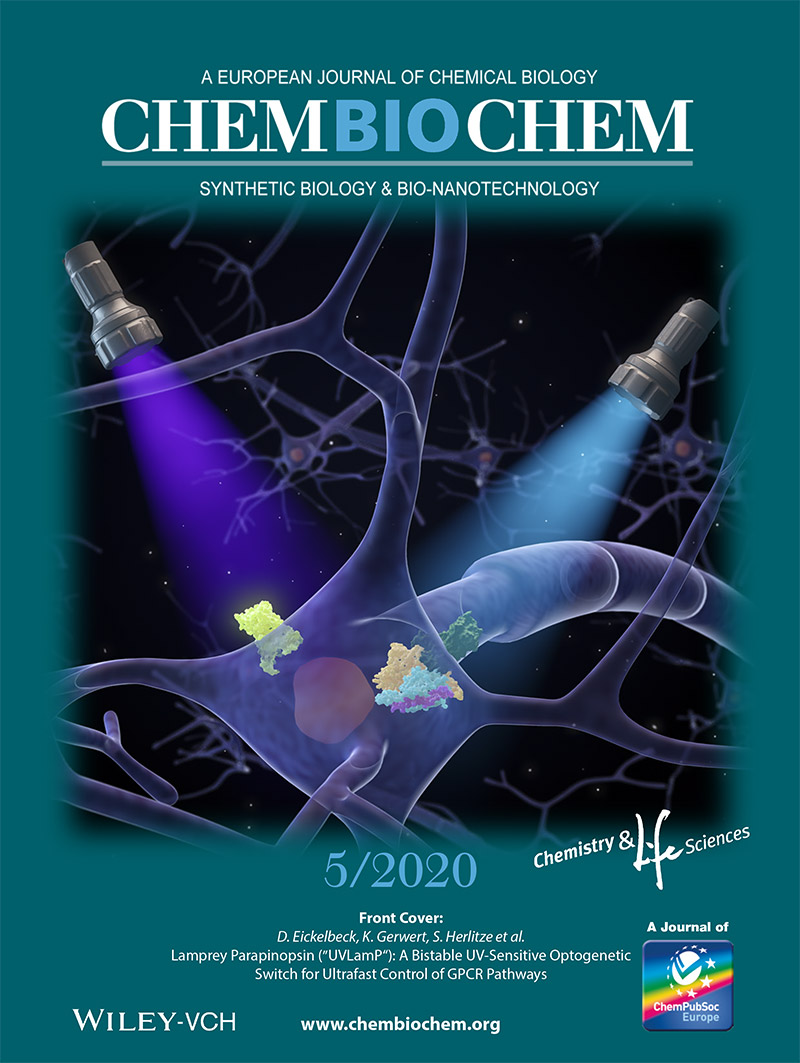
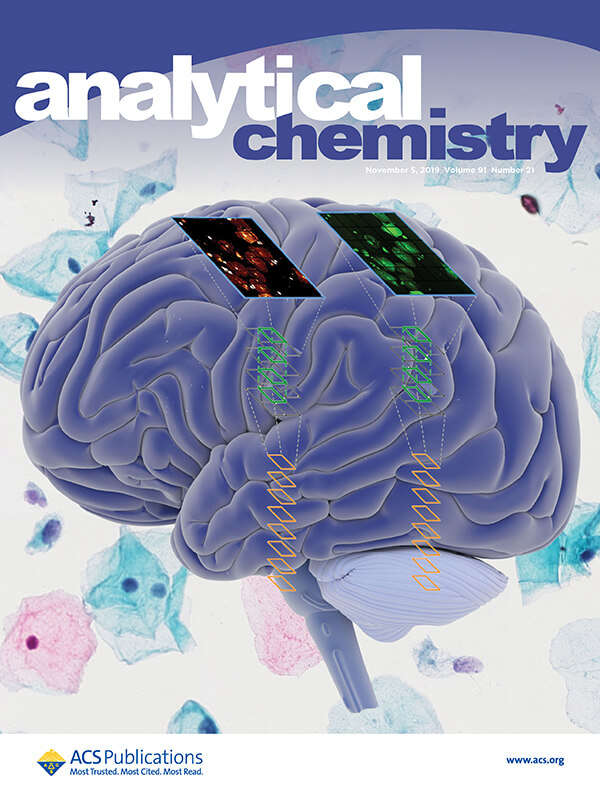
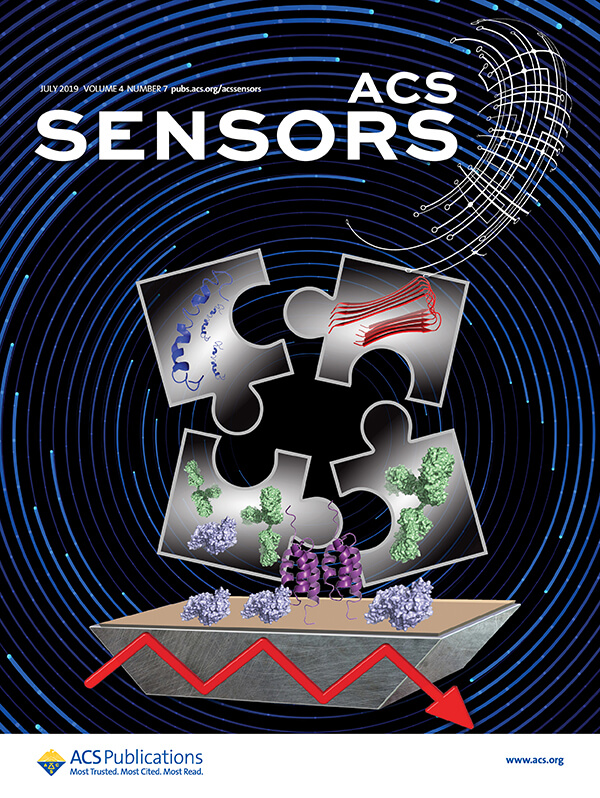
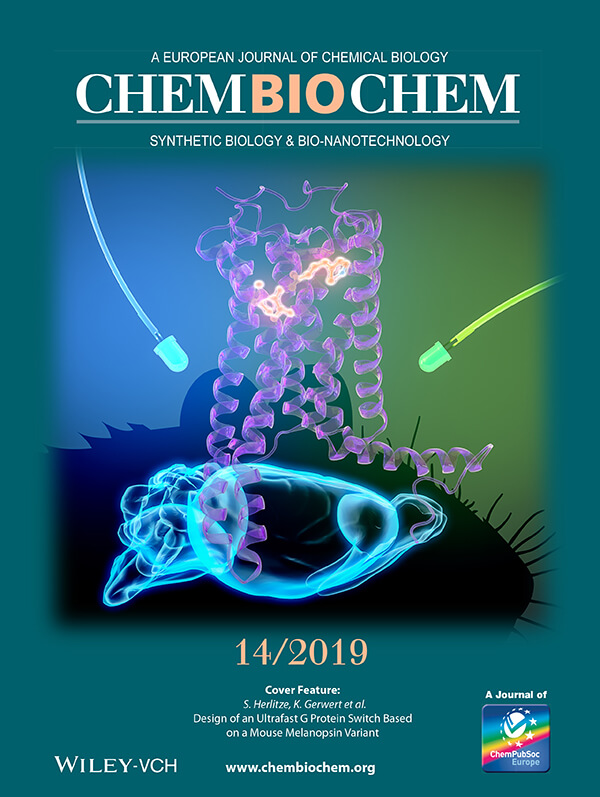
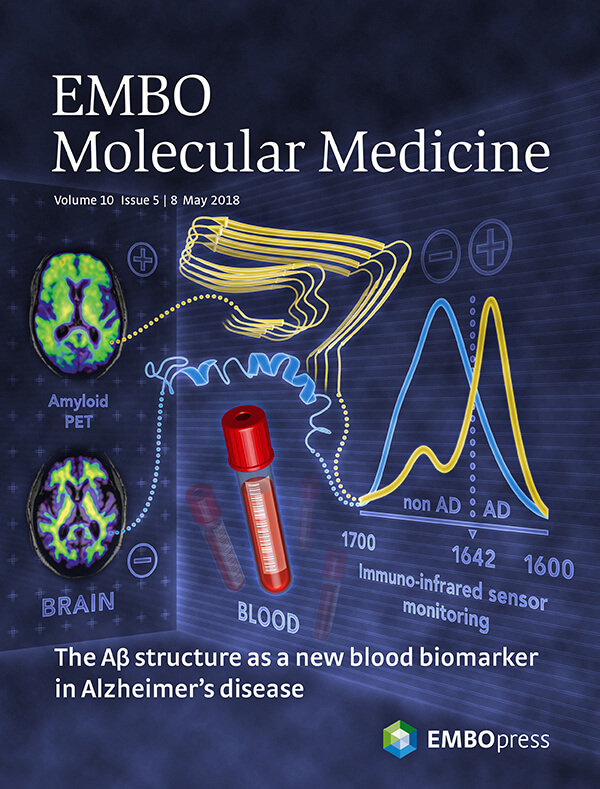
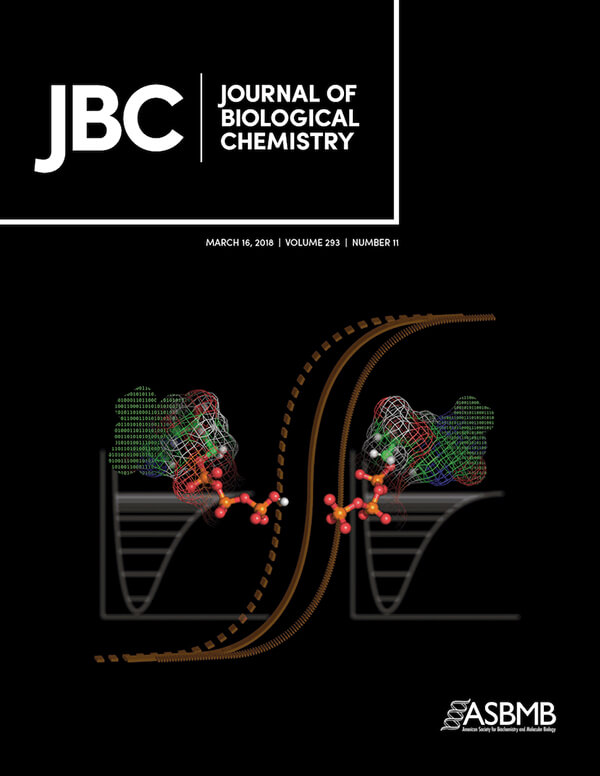
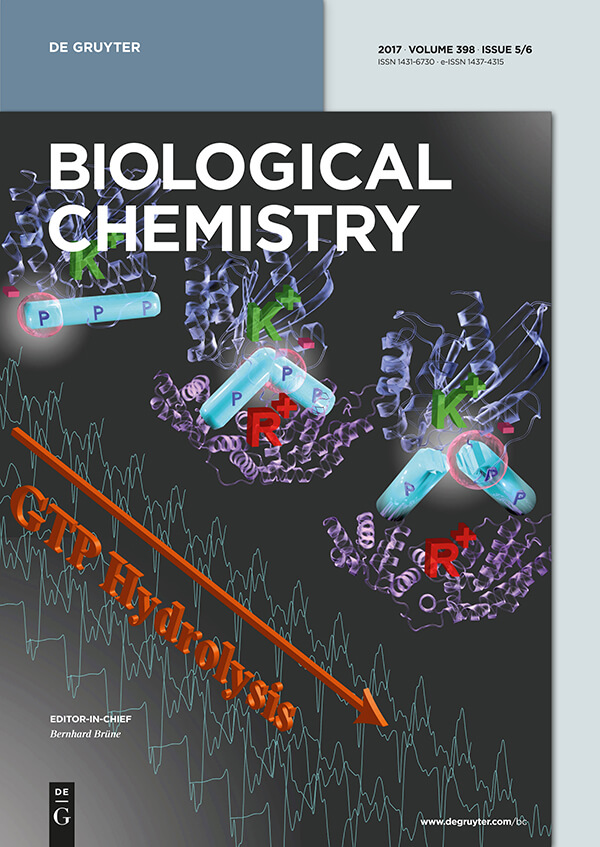
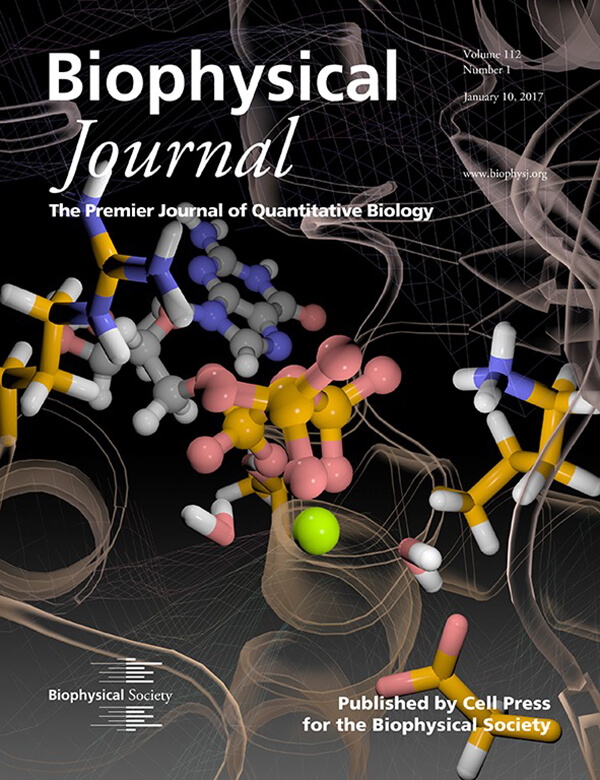
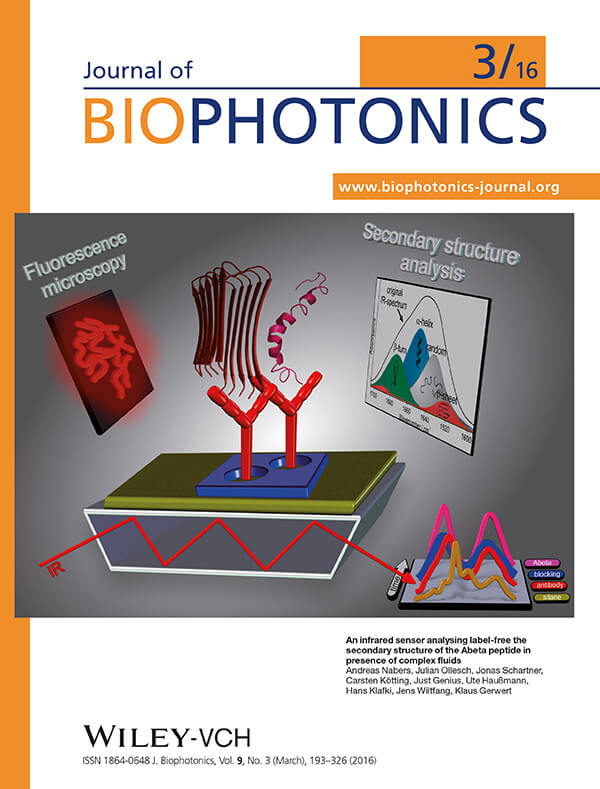
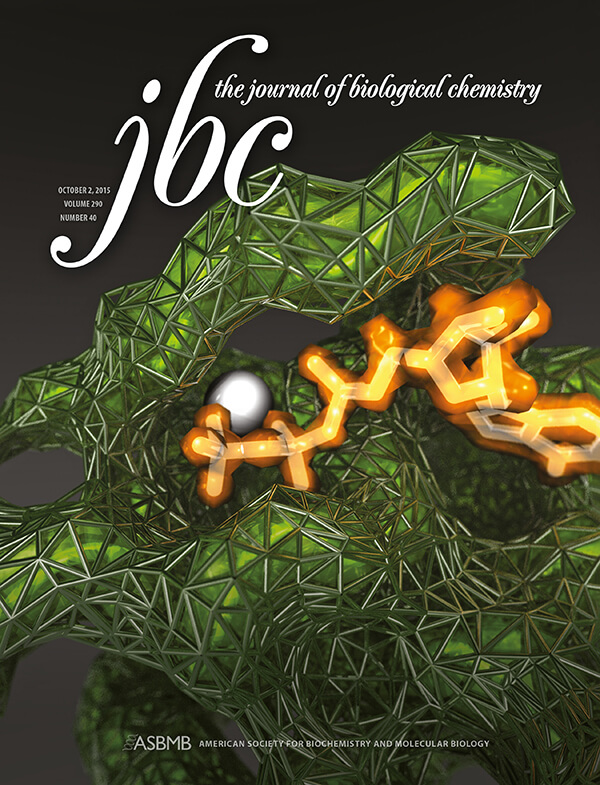
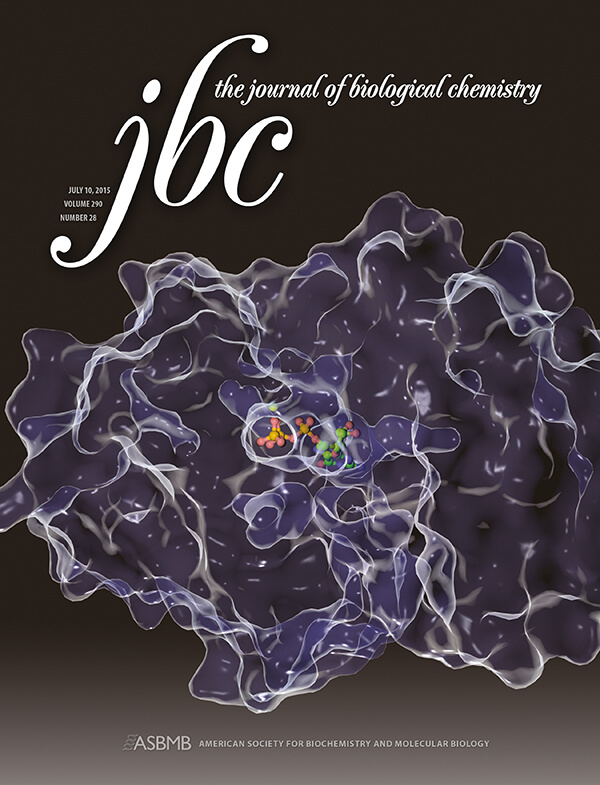
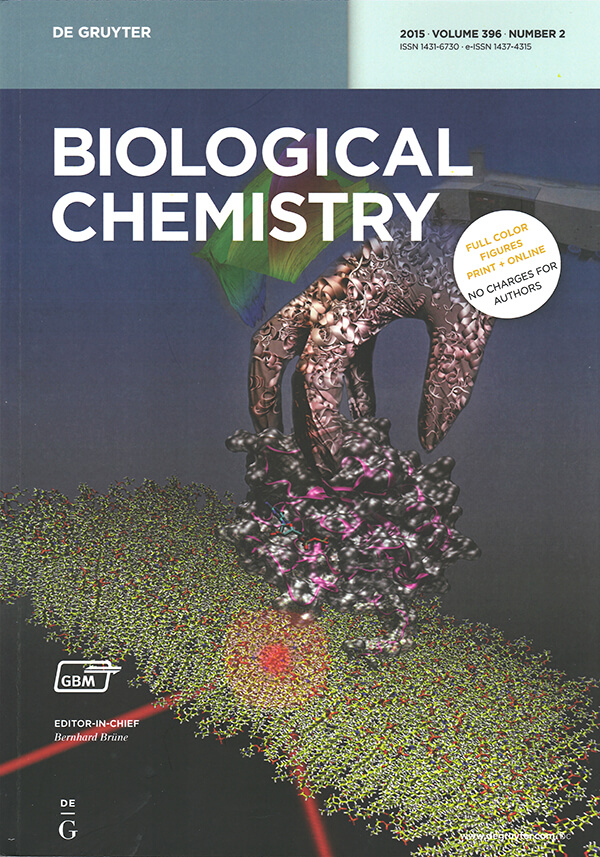
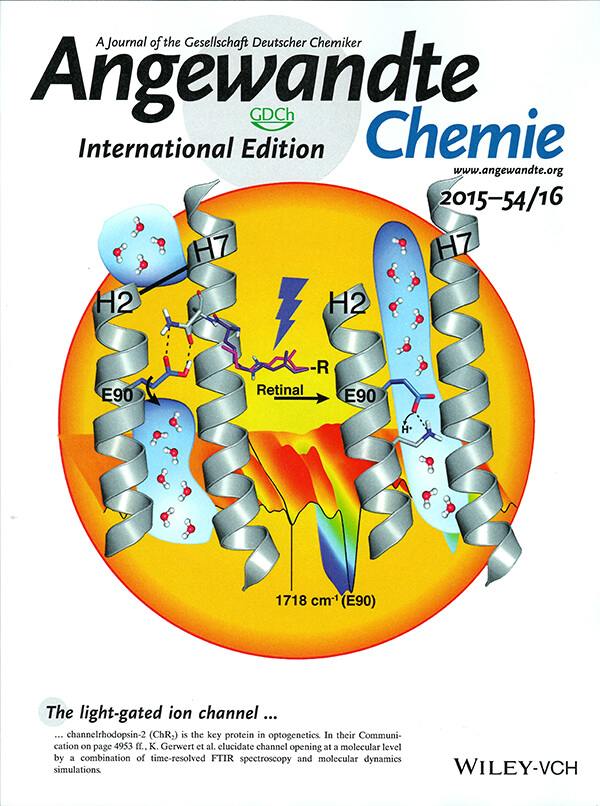
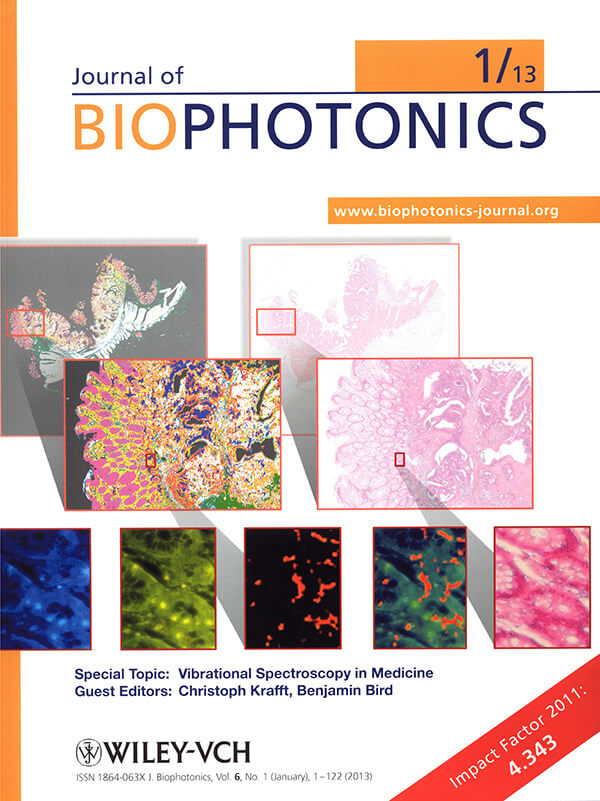
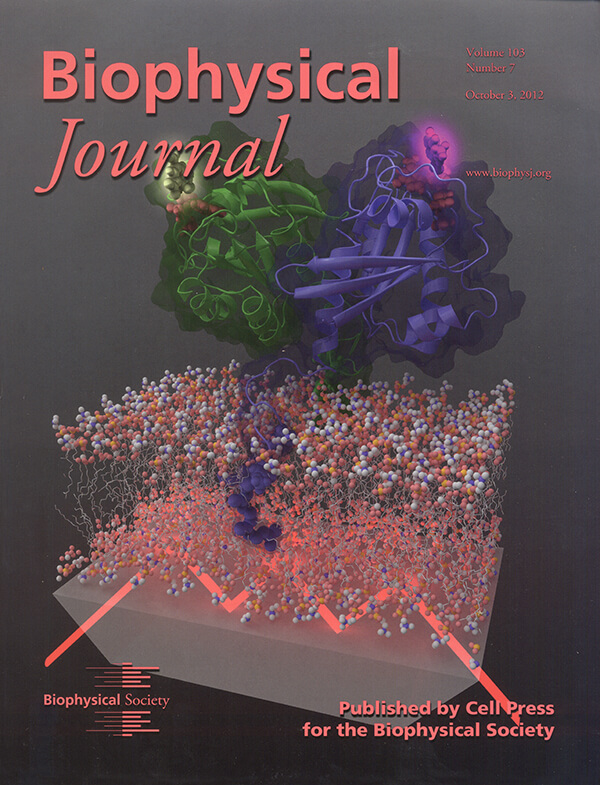
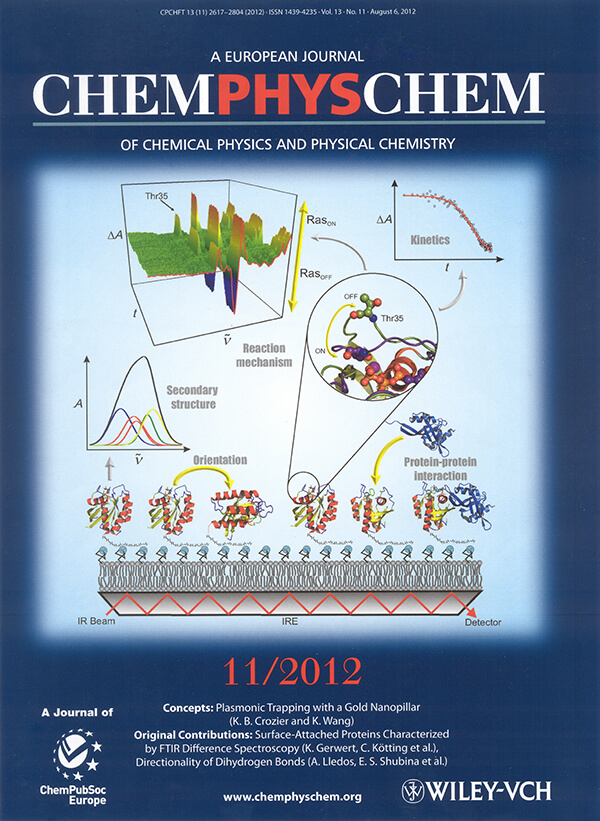
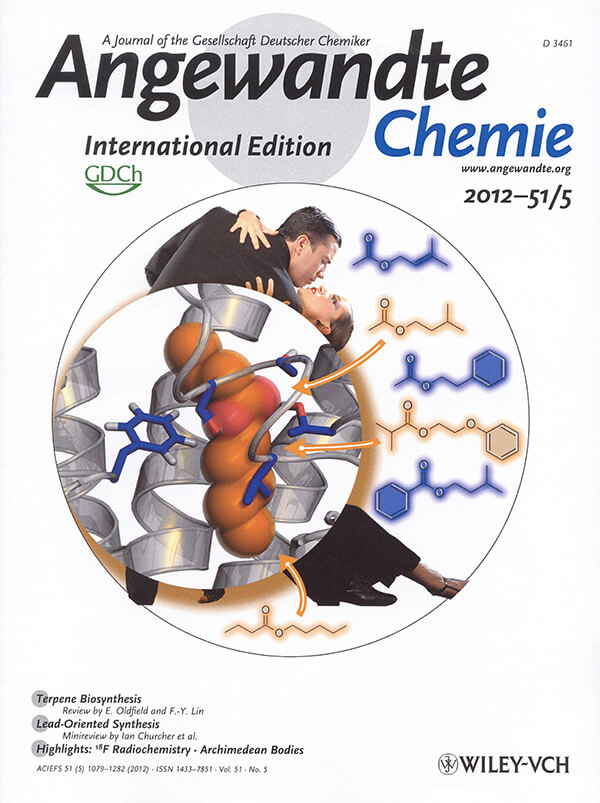
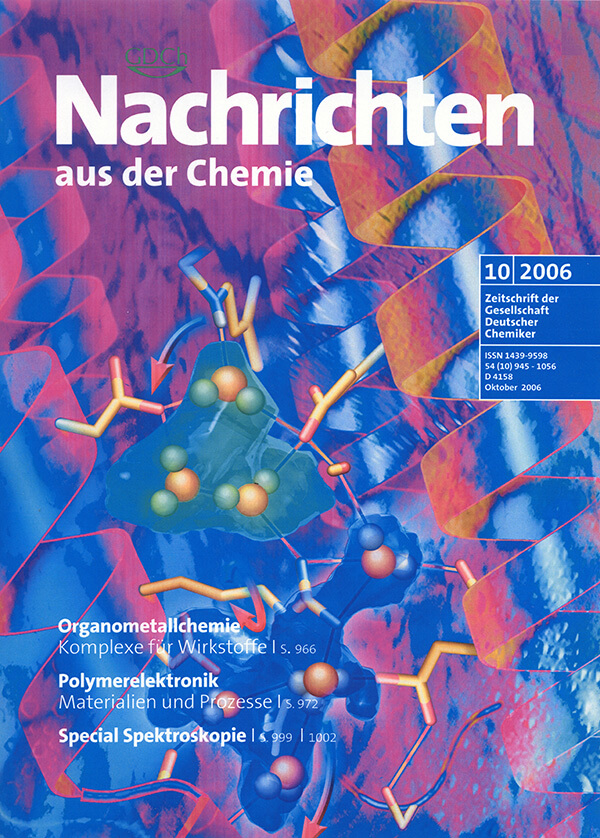
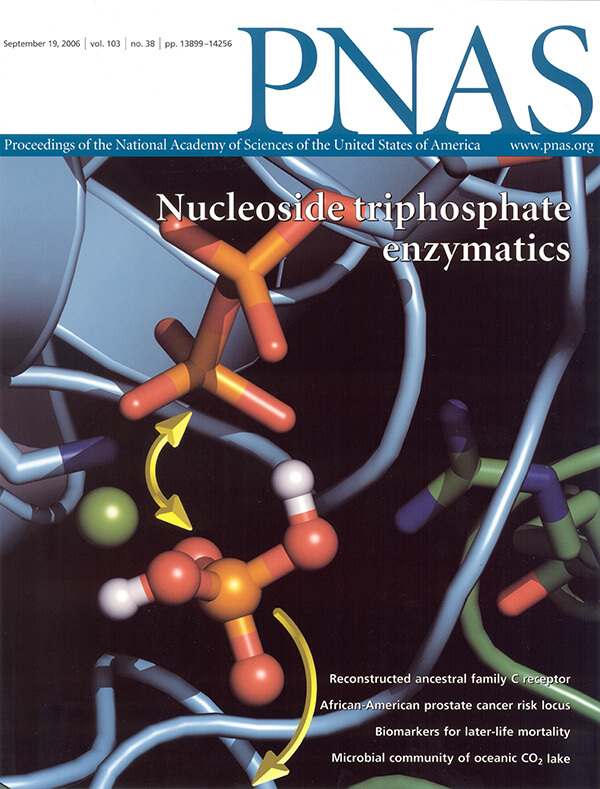
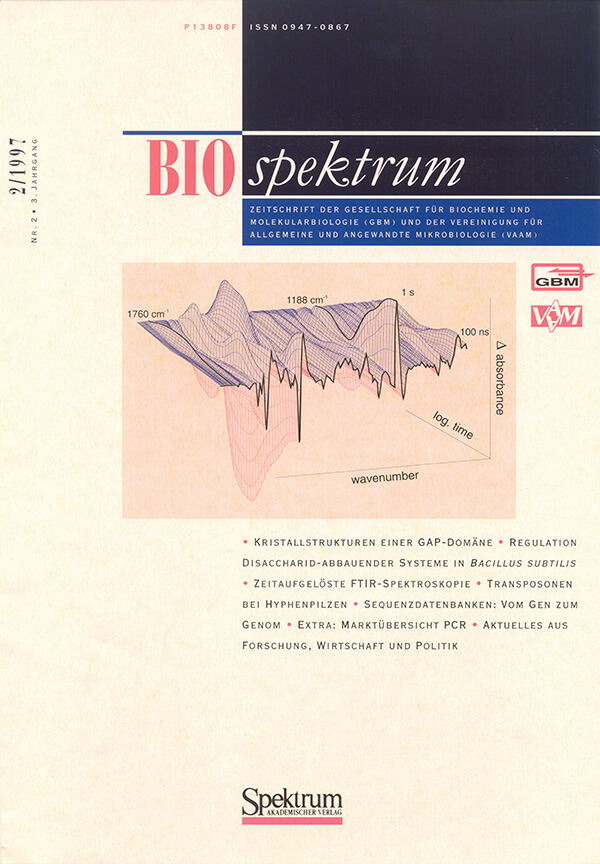
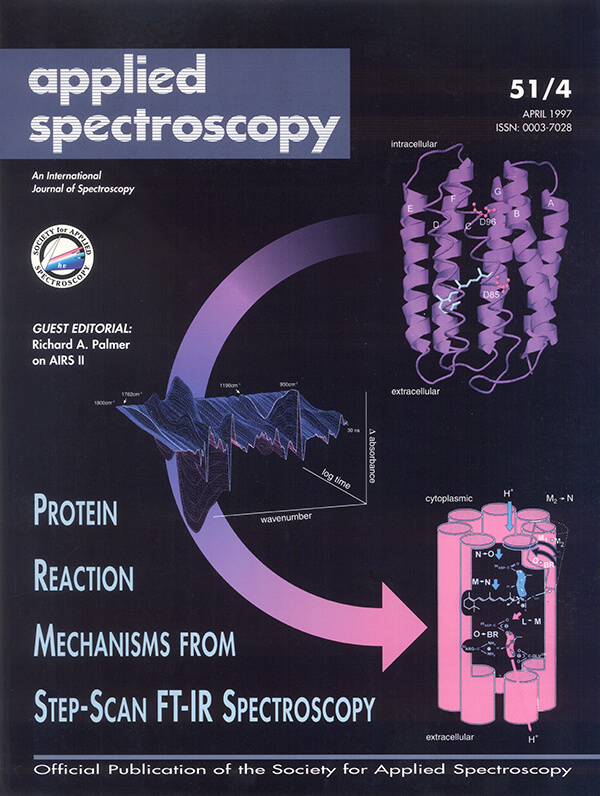
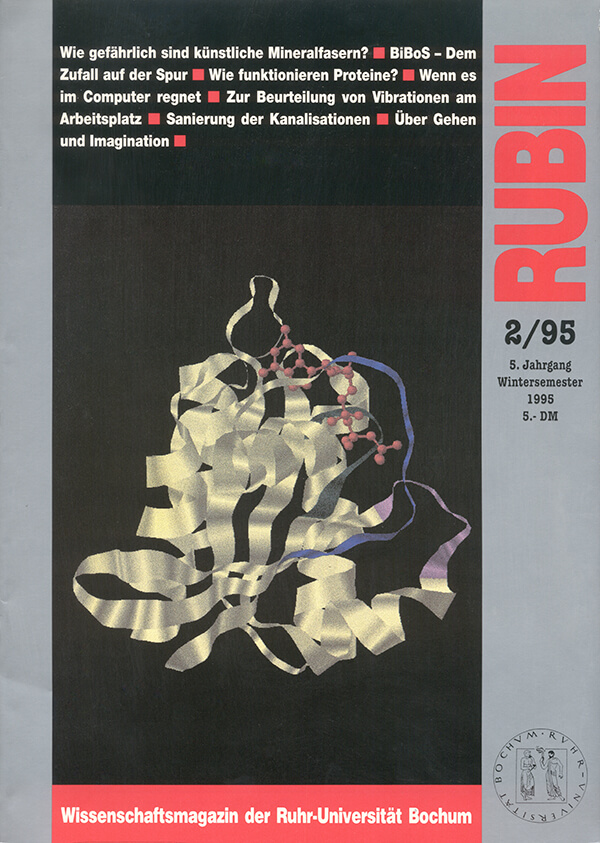
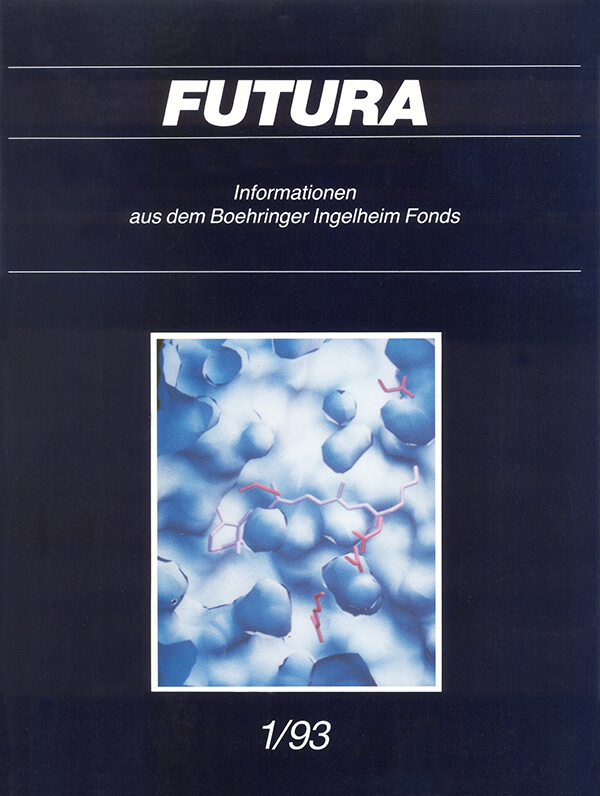
Movie & picture gallery
Vacancies
We are always looking for highly qualified and committed employees from the fields of physics, chemistry, biochemistry, biology, computer science and medicine.
Are you interested in a position as PhD or PostDoc? Please apply at: sekretariat-gerwert@bph.rub.de